December 2019:
December 4-5, 2019:
BIOMED Device 2019
San Jose
BIOMED Device is one of the leading events for the medical professionals. It was focused on digital health solutions and medical technologies. A series of presentations was addressing healthcare converging with digital technologies. The speakers and panelists discussed AI, VR and wearables in healthcare. The global digital health market is forecasted to be a $511 billion market by 2026. It is rapidly transforming industry that aims towards significant improvements in patient care.

The first keynote panelists discussed digital health. The speaker pointed out that identifying the useful data and actionable data is necessary for achieving a better result in smartly connecting the patients and physicians. They discussed the ways of making sure that those who store data and analyze it are medical professionals and do not use patients data for commercial applications. The speaker talked about Healthcare and medical device company, Commercializing medical devices and Finding ways and solutions for health care providers. David Houlding, the principal healthcare lead, Microsoft discussed Cyber security provided by Microsoft that aims to protect availability of data and integrity of data. He emphasized that Cyber security should be implemented. He also answered the following questions: What data is useful or important? How does data change behavior? and What is data actionable?
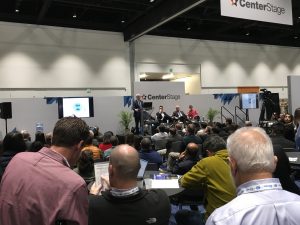
The next panelists discussed the ways sensors supporting the wearable revolution. The session’s moderator was Dr John U. Knickerbocker, IBM Research manager. He discussed Biosensor solutions, Wearables that people are willing to wear, Data sampling, Chemical biomarkers and using novel sensors, Neuroscience: Neuro analysis and neuro diagnosis, Developing unique sensors for patients with Parkinson’s disease , DNA sequencing devices and IBM life sciences research. The speaker said: “Consumer wearables can be used by anyone regardless of health.” And he added: “Implantable monitors are for those with specific diagnoses.” The speaker from Stanford said:”Consumers are worried to wear the wearables that collect lots of information about them and are not very useful for them.”
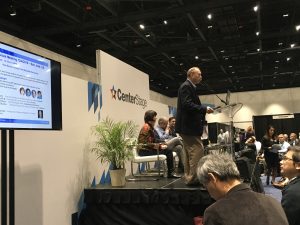
The next speakers discussed Wearable display for surgeons and Medical visualization. They talked about the Human factors in the surgery process and resolutions and key monitors development: higher resolutions, From LCD displays to OLED micro displaying and Redefining Surgical video visualization.

The editor of US Tech journal, Michael Skinner quoting Tesler described AI as whatever hasn’t been done yet. He mentioned that the brain is very complex and trying to model it with hardware and software is “a massive challenge”. Reasoning, planning, learning languages, thinking, analyzing and cultural activities are tasks of human and machine obviously cannot and will not be able to do that. Once Steve Wozniak mentioned he only considers a machine has intelligence if “it could make a cup of coffee” that includes “finding the coffee machine and a mug,” to add water and brew the coffee with pressing the correct buttons. (C) CTR Press
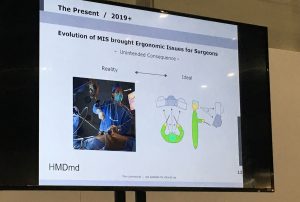
November 2019:
November 13-14, 2019:
AI & BIG DATA Expo North America
Santa Clara
AI & big data conference gathered AI researchers, data scientists, engineers, academics and Tech professionals to discuss the latest in AI, Big Data, cyber security, IoT, blockchain and 5G. The speakers and panelists talked about fundamentals of IoT, IoT structure, technology innovations, Machine Learning, future of mobility, smart and sustainable energy, utility automation, data analytics, applied AI, developing security solutions, the evolution of cloud for enterprise cyber security, global blockchain, the future of crypto assets, data driven culture and tracking goods on a blockchain.
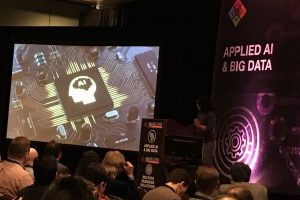
The speakers discussing the enterprise AI started his talk by this sentence: “There is more in life than profit.” And he added: “Corporations are more powerful than governments and they can influence economic policies.” He discussed Libra and negative opinions of people, Antitrust review by Justice Department and asked this question: “Could these big companies been broken up?”
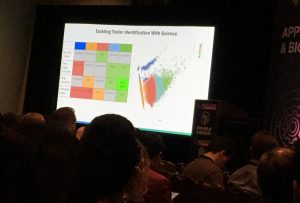
The next speaker, Simonini said: “In order to remain competitive companies choosing different journeys to AI.” She added: “AI is everywhere. We don’t know how customers behave in different environments.” Then she talked about the process of finding the best tester solution for AI and Predictive analytics and adding more values for customers.
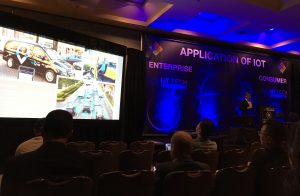
The next presenter discussed High capital innovations in applications of AI and Data privacy, security and safety. He said: “Future of mobility is the future of fleet management.” He mentioned that Business intelligence and data science helping the growth and later he discussed how to create a reliable and accurate demand prediction model, Increasing conversion rates, booking and utilization.
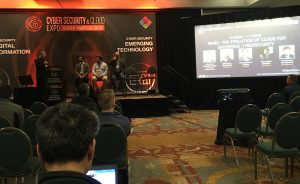
The Panel discussing Industrial cyber security risk strategy and evolution of cloud talked about Cyber defense and Secure communications. The speaker pointed out that the Changes are on both side: attackers and defenders. He said: “More types of attacks happening and the attacks are getting smarter.” Then he talked about Automations and DDoS attacks and Attacks from China. He pointed out that the lack of resources is a big challenge. He mentioned that there are different types of clouds and it is very rare to find a person who has knowledge of all. Covert, from WarnerMedia talked about business models, IT operations and getting consistency in the platforms. He said: “There are lots of issues that end users and experts are not aware of.” He added: “Attackers take advantage of the current vulnerabilities and the Complexity issues in the clouds are very serious.” The speaker discussed different issues in the single cloud environment and the multi cloud environment.

Chatterjee from Google talked about AI in Google and Artificial Neural network in Google deep learning. He mentioned that over 70% of video watch driven by algorithms recommendations. A data scientist in the audience asked him about the project Nightingale. The speaker replied: “I don’t know!” Some attendees called his denial “a cheap act”. Google’s Project Nightingale secretly and without knowledge or consent of the patients gathering their data: names, date of births, doctors diagnoses, lab records. After a patient checking in to the doctors office and the data is entered into computers then automatically all the data is transferred to Google and over 150 Google employees have access to the data on millions of patients. It is a huge and serious violation of privacy and is very unethical. One Google employee confirmed that the project was started last year and the speaker from India joined Google at the same time.

Once referring to AI researches, Hofstadter, a great thinker and AI critic, addressing Google AI researchers said: “I find it very scary, very troubling, very sad and I find it terrible, horrifying, bizarre, baffling, bewildering that people rushing ahead blindly and deliriously in creating these things.” (C)CTR Press
November 8, 2019:
Machine Learning
San Francisco
Machine Learning conference was a single-track event that gathered together the scientists, professionals, data scientists, researchers and ML enthusiasts to discuss the latest research and challenges in ML. A variety of sessions and speakers discussed the latest Algorithm applications, platforms and tools for solving problems by analyzing huge data in different fields.
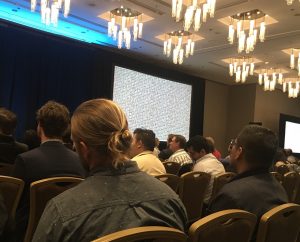
The speakers talked about the uncanny valley of ML, the importance of modeling in data collection, the brain’s guide to dealing with context in language understanding, AI in healthcare and Machine Learning modeling. The speaker discussed collecting the data from different countries and making models using Mathematical complexities and Deep learning. He explained Automatic differentiation and Variation of all auto-encoders.

Then he explained the way each country contextualize modeling by adding time to the high capacity models; then he discussed Global algorithm, creating fully trained models and additional nodes and parameters. The next speaker talked about Deep learning architecture for semantic relation detection tasks. She discussed Natural language processing and words with multiple meanings and Algorithms and antonym detection. She said: “Learning antonyms and identifying the semantic relations and paraphrases databases can be done by using Wordnet seed set and automatically learning antonyms from paraphrase database.”
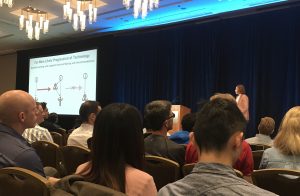
June Andrews talked about Human decision system and Machine learning and Pressures for introducing ML into decision systems. She recommended the followings in using test environment: adding a recommended decision from a model, simulating the models of different accuracy by perturbing the ground truth labels, assigning each person to a simulated model and running test labels for normalization and measuring system accuracy and speed as a function of ML accuracy. She said: “High risk ML with negative features increases 40% denying the bails in the courts.” She added: “Bureau of justice statistics has a warning of interpreting data with caution.”
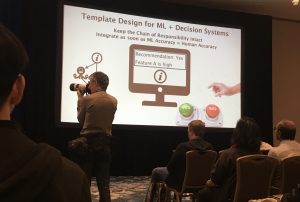
The next speaker explained how data is collected and pointed out the importance of selection and Selection bias in data collection. He explained how to create a tool to predict profits in the software projects and Modeling the data collection processes. He said: “We can now learn from what we don’t see in modeling data collection.” He explained Modeling the probability of making observations and Incorporating knowledge on data collection.
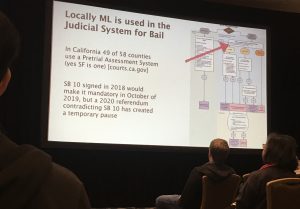
Ted Willke talked about Brain and Natural Language understanding and Machine translation. He pointed out the importance of context in language understanding and the brain activity. He said: “In order to understand Language, the human brain explicitly represents information at a hierarchy of different timescales across different brain area.” He discussed Learning models, Recurrent neural networks and Evaluating the performance of these models. He added: “Sequence modeling applied to language is language modeling.” He explained Predict word LAMBADA word level and mentioned that learning long term dependencies is difficult and the solution is Gated RNNs.He discussed Temporal convolutions neural networks, Making current predictions, Encoders and decoders and Multi headed self attention mechanisms.
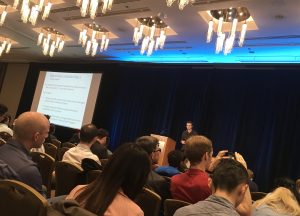
The ML skeptics argue that Machine Learning is glorified statistics: Statistics dealing with understanding and interpreting data and Machine learning is computational algorithms. They say that in many cases, creating the algorithms is costly and useless. They argue that it involves the transforming inputs from one space to another that are interpreted faster. (C)CTR Press
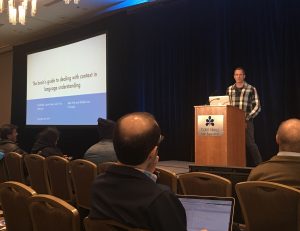
October 2019:
October 14-15, 2019:
XRDC 2019
San Francisco
XRDC is the premier event for AR, VR and mixed reality professionals and innovators. Its goal is discussing the latest trends on users’ cases experiences in healthcare, education, games, entertainment and industrial design. This year conference focused on innovation and strategy, AR, VR and MR producers, software innovations and healthcare AR, VR and MR products. There was a variety of tracks such as healthcare, enterprise, entertainment and brand experience tracks. Some doctors and professionals in the healthcare industry are increasingly adopting X-RAY applications. XR is transforming therapies and they are aiming for the costs and risks reductions. Also XR is trying to empower manufacturers and help them to increase efficiency. XR also has a remarkable role in elevating the brand immersion and creating new audience and customers for the brands.
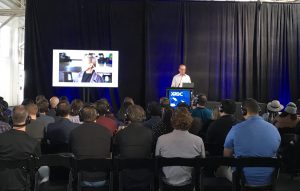
The speakers and panelists in the following sessions addressed the latest challenges in the industry: War Remains using LBE to transport audiences to WWI, bringing VR experience to life through music, XR simulation development in a pediatric setting, MRI simulator, VR games for better vision, Multi camera recording systems fo XR, the reality of AR and VR, and the Machines have no brain.
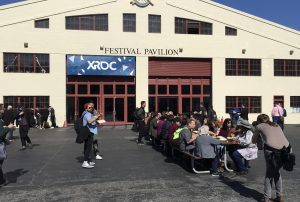
The speaker discussing Multi camera systems explained the History of 3D from 1839 the first 3D photograph. He discussed Motion capture, visual images and its applications in military, entertainment and medical, 360 degree video, 6DOF and its applications and Sensors, Stereoscopy applications in culture and science research, Volumetric capture applications in film making, sports and events. He said: Light field capture is the capture of all light rays within a 3D space.” And he added: “And its applications are in media, architecture and engineering.” Then he explained Advanced capture requirements.
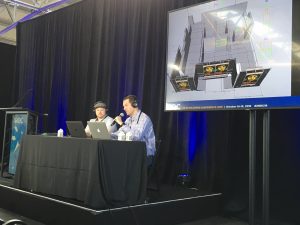
The next speaker talked about different applications and techniques in Healthcare VR. He warned about Bronchitis stimulation and how scary would be for the children. The speaker explained Crash cart app, Heartpedia app and Sustainability issues in healthcare VR.
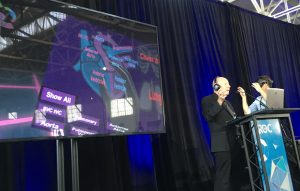
The next speaker from SickKids hospital in Toronto talked about MRI simulator: using biofeedback loops to reduce anxiety in children. He started his presentation by pointing out that the number of MRIs is on the rise. Then he discussed the Increasing cost of sedation, using gas mask for sedation, Exposure therapy and Biofeedback mechanism. He said: “MRIs are never turned off, just once in five years for maintenance.” Then he discussed which VR headset to use: ones that are easy to setup, with 6DOF degree of freedom, those that work when the user is lying down and ones that can bring caregiver to the experience by the laptops.
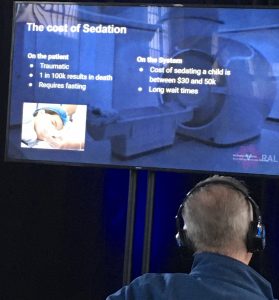
Use of MRI by researchers, radiologists and child life specialists is accompanied by a variety of experiences such as failed scans, the problem of claustrophobia and body movements. Biofeedback using instruments that provide data on the systems and those that can be manipulated. MRI simulator processes are in the controlled environment with the reduced costs. MRI experience is a terrifying experience for children and many children are given sedation that is both risky and expensive. Researchers are looking for the ways to reduce the health risks and costs.
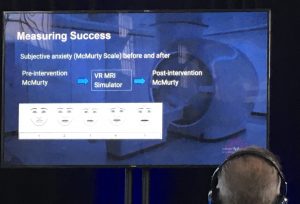
The critics of VR such as Gotsis, a professor of interactive media in the university of California said: “I see more falling than anything else. Wearing a handset making you blind to the world around you. You can be seriously injured and someone needs to watch over you when you are using VR.” Professor Banks warned about the risk of Myopia and motion sickness as the result of using VR. VR can effect eye brain connectivity. Greenleaf from Stanford University warned about the long term effects of using VR that is still unknown. The real victims are children that are incapable of communicating discomfort. Bailenson, the director of VR Lab in Stanford University had let his small daughter to use VR just four times and each time less than four minutes. And he warned about the safety issues of using VR by children. (C) CTR Press
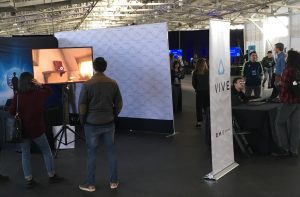
October 3-4, 2019:
BoxWorks 2019
San Francisco
BoxWorks conference gathered business leaders, IT specialists, investors and Cloud Content managers together to discuss the processes of a digital business transformation and how Cloud Content management from Box can give the businesses the desired competitive edge. The panelists and speakers discussed the current challenges in the industry and how to disrupt and share insights for transforming the business operations.

In keynotes and breakout sessions the digital transformation, digital business, modern cloud stack, security, privacy and data protection were discussed. The panelists talked about the effect of going digital in an organization and how new technologies, new processes and adopting new solutions can deeply creat managing changes in a business. The speakers introduced the seamless processes that change business operations. They emphasized the use of the proper tools for the business and how securely connecting the business apps in an organization. The speakers emphasized the need for updating strategies in an organization.

Driving digital change: removing friction across changes in the organization and initiatives in financial services were discussed. The speaker pointed out the need for creating the fresh looks at the current business behaviors and bearing in the mind the goal of making the business more efficient. The speaker explained how they brought 4000 applications together using Box.

The speaker explained the biggest challenges in driving changes and said: “Security reviews are different in each country.” Then he discussed the values of transformation and Cultural aspects vs changing management aspects. He said: “what IT doing to us is very different from what IT doing for us.” The speaker emphasized using companies such as Box for the transformation processes. He added the need of involving engineering team in the customer service unit. The next speaker focused on Digitally transforming and discussed Talented people and digital initiatives that creating more strategic investments. He discussed Leveraging technology for validation process and Insurance sectors and digital processes.
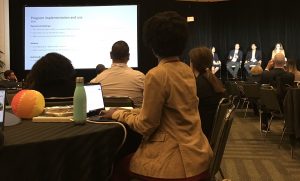
The next panelists discussed Box GxP validation. The speaker said: “we deliver information on Box operating processes and procedures.” She added: “It accelerates validation with continuous testing.” The speaker explained that Box provides an innovative approach for ensuring GxP compliance in the cloud. The speaker asked: “What are the risks?” And later she explained that all contents guarantee a secure platform. The next speaker discussed ownership of data and how people wants more ownership of their data. He said: “Data, data and data and protection of data should be the main focus.” Then he added: “Data protection is different in each country.” “In digital transformation the landscape changes very quickly.”

In the Public sector session, the panels discussed Citizen services, automation and data security. The speaker said: “Government budget is shrinking and automation is a solution.” He added: “Agencies are not prepared for dealing with data security in their business processes.” Then he discussed Securing ITAR data in NASA using Box, Box solution and one platform for all and Complexing and security challenges: Frictionless security and compliance. The next presenter talked about micro strategies and how the right strategy brings the right mix of solutions for addressing the business challenges. (C)CTR Press
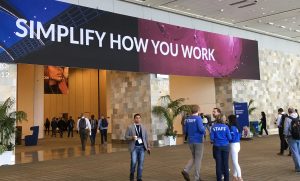
September 2019:
September 15-20, 2019:
Oracle Open World & Code One 2019
San Francisco
Oracle Open World 2019 started with the keynote speech by Larry Ellison, CTO Oracle. He discussed Gen 2 Cloud Autonomous Infrastructure. Then during Thought Leader sessions, the panelists discussed the art and current challenges of business influences. In a variety of sessions, the professionals and experts discussed innovation and big data in data science and cloud structures, cloud platform and database trends, power of AI, ML and Blockchain, Data centers, Oracle cloud infrastructure, Expanding the regions, Flexibility of choice and Customers data centers.

The speaker pointed out that each customer needs are different. He explained the third party marketplace and emphasized the roles of rewriting and refactoring in replatforming. He said: “Transformation is a state of mind.” And he added: “Instead of migration we use the term upgrading.” He discussed Pace of innovation and reminded the audience of avoiding to make user face more complicated that may confuse the customers. The speaker talked about the cooperation and finalizing plans between Oracle and Microsoft.

In the solution keynote, the speakers including Juan Loaiza discussed database trends: the good, the bad and the ugly. It was an interactive and lively sessions and on each subject discussed the audience expressed their views about each database by thumbs up or down. The speakers showed the slides and explained many databases ideas such as NoSQL, IoT, ML, Kubernetes and microservices.
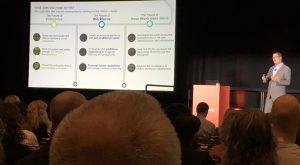
The speaker discussed how the separation of database is enabled. He said: “Machine learning is able to solve analytic problems and identify patterns that were previously impossible.” He added: “Specialized machine learning platform create confusion.” The panelists explained ML algorithms and how to Keep data secure by avoiding copy contagion. He pointed out that Native Blockchain tables coming in database 20. He said: “It locks and no one can change the sequel; it participate in transactions and queries. Participants can sign and verify data to detect provider fraud.”
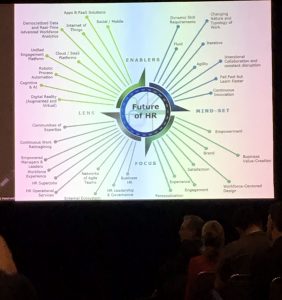
Leone and Sokoll in the general session discussed how to prepare for the future workforce and HCM innovations in the cloud. The speaker explained that the average work tenure is four years and how can employers keep talented people longer. The speaker discussed navigating the route and getting ahead of challenges for the future of HR. He talked about applications and platforms and Enablers of the future of HR and HR service delivery by engaging platforms. He discussed What is new in the world of HR, HR super jobs and Empowerment with data and business value creation. He emphasized that “Personalized approach is crucial.” The speaker showed many slides on the role of technology to try things, the agile mind set and Sustainability of business performance. He emphasized focus on human experience. He pointed out that HR must take the lead for “enterprises to reimagine the future.”
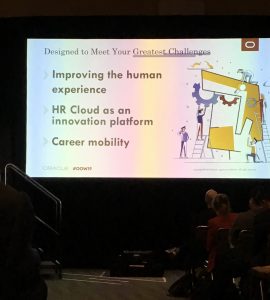
Leone talked about the Customer engagement, Digital system and conversational experience. He showed an interesting demo of talking to Oracle: the Voice enabled experience. He discussed the Greatest challenges and improving the human experience, Career mobility, HR Cloud as an innovation platform, Customer centric user design and Leveraging new technologies.
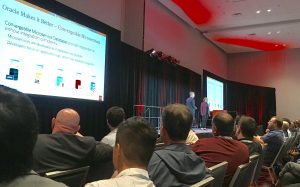
In the exhibition hall there was monitor showing the world bee project works for sustaining buzz with Oracle Cloud and AI. Oracle announced a partnership with The Bee Project in 2018. It offered the use of its cloud storage and AI analytics tools to support them. This is the first private organization to launch a global honeybee monitoring initiative for informing and making actions for improvement of pollinator habitats. They monitor the sound of a bee colony and then interpret it for assessment of health and behavior of the bee colony.
(C)CTR Press
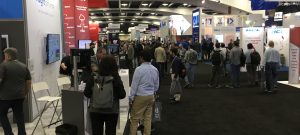
August 2019:
August 20-23, 2019:
Pulse & Special Crops Convention
North America
The Canadian Special Crops Association hosts the convention in a different city each year. It is considered one of the largest events of special crops in North America. The attendees from around the world gathered to discuss the latest issues regarding economics, geopolitics, agriculture, trade and special crops production industry. Pulses and special crops come in a variety of sizes and shapes and according to FAO, the main types are such as beans, peas, chickpeas, lentils and buckwheats.

The keynote speakers talked about the global economic outlook. The chief economist pointed out that in early 2020 it will be a recession. He discussed the geopolitical factors and stresses that directly influencing the economy. The speaker talked about the monetary policies, trade uncertainties and manufacturing and services. He pointed out that there is a need for distinguishing between the real and the false signals of recession. He discussed the currency wars and the pressure on stock market. He said: “ Uncertainty is the worst, it is worse than actual tariffs.” He emphasized the polluting factors of the shipping industry. He mentioned that complying with the US regulations would be the violation of China trade regulations. He pointed out that the conservatives in Canada are looking for tougher stance against China. He said: “ China is not playing by the rules.” The chief economist emphasized the importance of water and discussed water intensive crops and products and the sustainability. The speaker pointed out that the new regulations of cleaner fuel would have strong impacts on shipping costs and industry. Talking about Water footprint, he mentioned that “Growing chickpeas in Montana And Dakota is very different from growing that in California regarding water footprint.” The water footprint measuring the amount of water used for production of each goods. It also informs us how much water is being used by each single country.
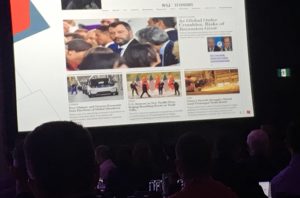
The next panel discussed the growing demand for plant protein in global market. The speaker talked about Germany tax policy on meat. He mentioned that Goldsmith university in London is banning the usage of beef. He talked about Plant base products scaling and how McDonald’s position on animal protein had been changed. He then asked how many vegans are in the conference hall. None of the attendees were vegans. He talked about Younger generation and plant based foods choices. The next panelists talked about market outlook for peas. The speaker said: “China is using yellow peas as leverage against Canada.” He talked about price sensitivity of the current market.

The next panelist talked about the quality of the production and exports. He said: “India always buy the cheapest products at the cheapest price.” Then he explained how this policy is a threat to the good quality production and exports processes. The speaker mentioned that Japan used to be the main market for buckwheats but now the main market is USA. There was emphasis on the high quality production. The cultivation and regulations of GM crops differ from one country to another: in Italy and France there is no GMO production but it allows the imports upon authorization and GMO labeling is mandatory.
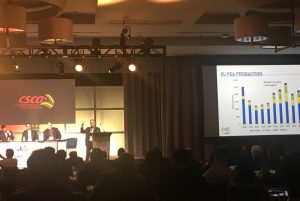
According to FAO, in the GMO crops production “the sleeper genes could be accidentally switched on and active genes could become silent.” Genes introduced in GMOs, the process and the result are often divided the scientists opinions. Professor Vandermeer from University of Michigan believes that genetic engineering is based on incomplete knowledge of the genome and in fact a huge number of complications are involved. He said: “Inserting a piece of DNA into a big genome and expecting just the single protein you are planning for and nothing else is probably not possible.” And many other scientists also warned about the hazards of GMOs consumptions. (C)CTR Press
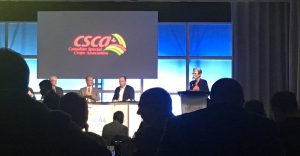
July11- August 1, 2019:
Fantasia Film Festival
Montréal
The 23rd Fantasia International Film Festival presented a variety of features, short films and animations from different parts of the world. Fantasia is recognized by the international film industry and many of the features on platforms such as Netflix were seen by millions of viewers. 2019 is the third year of its partnership with the Cannes Film Market.
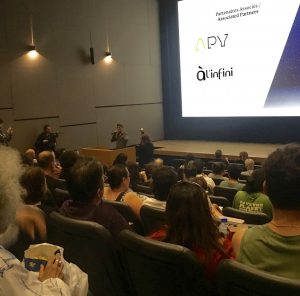
One of the best features was the movie: “ПАПА СДОХНИ, Papa Sdokhni” from Russia; internationally it is called: “why don’t you just die!” It was written and directed by Kirill Sokolov. It was a deep dark comedy; the viewers were on the edge of their seats and holding their breath during 95 minutes of this movie. They were in the state between laughing and crying during this intense movie. Matavei (played by Kuznestov) arriving at Andrei ( played by Khaev) apartment with a hammer. Then it is like reading and watching Dostoyevsky novel! Deep and intense! Sokolov described this movie as “ a western in an Apartment” influenced by Sergio Leone films. But it was far more than that; it was a mixture of Leone, Tarantino and Fellini. It was very deep showing how money can corrupt people. Sokolov was born in 1989 in Saint Petersburg and in 2012 he received a master degree in the Physics and Technology. Then he began making short films. He is uniquely talented for making dark comedy and his short film called “The Flame” was his thesis for his diploma from Film Directors and Scriptwriters courses. This artistically philosophical movie starts and ends with this sentence said by Aleksandr Kuznetsov, Matavei in the movie:”Evil won’t touch me.” The actors and actresses in the movie were very professional and well directed especially two main characters played by Aleksandr Kuznetsov and Vitaliy Khaev. The script written by Sokolov is a philosophical one when one character says: “people used to the unacceptable behaviors can’t feel it’s ugliness and do it again and again.”
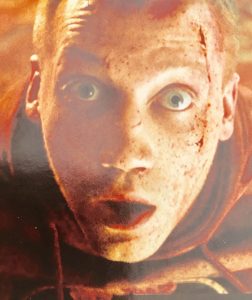
There was a variety of short films and animated film. One interesting animation was by Julie Fournier: it is called “Ice Dream”. A penguin at an Oceanarium dreaming of becoming an ice cream seller in this 4 minutes short animation by Fournier. The composition of colors is dreamy and fantastic. It is simple, human and beautiful of portraying a struggle to achieve a dream. Short films about social media and robots obsession were shown in Best of Les Utopiales. Les Utopiales is held every year in Nantes, France. Juliet by Marc Henri Boulder is a short film about robots obsession. It was an interesting short film. Another short film called Lo Siento Mi Amor directed by Eduardo Casanova in Spain was a type of conspiracy short film, and finally RFLKTR by Matt Turner, USA is a short film about a pilot who faces and fight with an enemy and at the end she finds out that it was another version of herself.
(C) CTR Press

July 2019:
July 24-27, 2019:
CogSci 2019
Montréal
The 41st Annual Meeting of the Cognitive Science Society brought together academics and researchers from around the globe to discuss the latest researches and findings on the nature of the human mind. The goal of conference was creating an opportunity for scientists and researchers on human mind to interchange and discuss the latest challenges on the following topics: linguistics, artificial intelligence, psychology, anthropology, philosophy and neuroscience. There was a variety of sessions and workshops discussing the cognitive science and learning development in decision making, reasoning, creativity, memory encoding, AI and human intelligence, cognitive architecture, languages in context, thinking, problem solving, analogy, planning, deception and cross linguistic analysis.
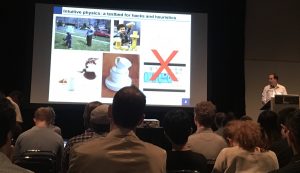
The speaker discussing Adaptive Design Optimization mentioned that there are three basic classes: task, model and engine and he explained the Psychometric function and how to deal with risk. He showed many slides and models of experiments and asked the audience: “Which one would you prefer? $ 11 now or $56 next month?” And then discussed 2 model parameters in hyperbolic model by Mazur. The next speaker discussed Compact visualization, Visualization with fixation and Eye movements analysis. He pointed out that there are different strategies and factors and objective meters to analyze ROI sequence. Smith talked about the intuitive physics engine and making predictions, Boundary optimal and rule based reasoning and Simulation and rules in balance judgements. He said: “We need stimulated engine to analyze people’s behavior.” Then he discussed the way children develop knowledge of balance and he showed many slides and asking the audience questions and judgements about balance.

The next presenter talked about word learning. She showed many slides of an English learner learning Italian words and how infants were able to track TPS in the Italian corpus. She discussed these questions: “Are newly encountered word forms retained in memory?” “Why did infants in the immediate condition successfully map both HTP and LTP sequences to referents?” She showed how the infants can simultaneously take advantage of both and how the infants familiarize with natural Italian corpus. The panels discussing Human and AI in learning languages talked about Autonomous learning: selecting task and constructing its network. The speaker discussed AI and causality and explained the Case of experiments on monkeys and Concept of cause and how there is a gap in deep learning. He said: “if we say X is the cause of Y if Y listens to X, is like saying if cancer listens to smoking.” He discussed the Psychological experiments and Manipulating and the results and how causality helps to understand human behaviors. He said: “There are motor actions in the universe. Using deep learning with sensory inputs and performing modal retention lacks the symbolic capability of semantic pointers to expand to regularities.”
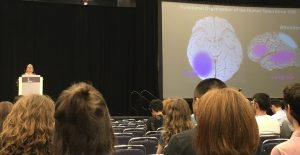
The next speaker discussed reasoning and Difficulty in judgment. She said: “Difficulty in judgments are derived from mentally stimulating efficient agent interacting with physical one.” Then she discussed Hybrid task and motion planner: inputs, task planning and motion planning and Using robots and algorithmic efficient forms. The speaker from London talked about Deception in evidential reasoning: willful deceit or honest mistake? He discussed the Case of deception by agents trying to show the criminals as innocents. In his research he used Qualitative and quantitative approach for analyzing the probability that crime investigators are deceiving and how Contradicting each other that increases the possibility of deception by the agent. He said: “If you are deceptive you don’t want to be discovered.” He showed the slides of the models that were created from databases.
There were two totally different keynote speakers: both were middle age female scientists, specialized in brain and cognitive studies. But their presentations and approaches could not be more different: Dr Nancy Kanwisher from MIT presented a lively, fantastic and useful presentation on functional imaging of the human brain. The audience loved it. On the other hand, Elizabeth Churchill presented a boring and vague presentation on creativity that ironically lacked any creative elements in it.
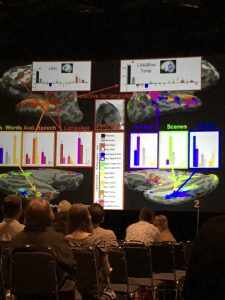
Dr Kanwisher is a professor in the Department of Brain and Cognitive Science; she talked about identifying different regions of brain. She pointed out that Language region is distinct from every other part in our brain. She said: “Language and thought are not the same thing.” And she added: “Not all regions of cortex have highly specific functions.” She discussed Roadmap for future research. She discovered both Fusiform Face Area: the region of the brain that distinguishes between objects and Parahippocampal Place Area that recognizes environmental scenes. According to her colleagues, in the past she even shaved her head while teaching on neuroanatomy to help her students in visualizing the regions of the brain. She also talked about Multiple vowel pattern analysis: reading patterns of responses and how to look at face pattern and get the information. She mentioned that she used the
Face database with 10 million faces and classifying the faces at the end. She asked: “Can this network discriminate objects above a chance decoding the objects?” Showing a video of a patient undergoing brain surgery and how the patient seeing unreal images and imagining faces; she said: “People see faces in the cloud.!” She explained different experiments such as raising baby monkeys without letting them to see any faces and how the Visual maps in the brain cortex works. She said: “Seeing faces is not necessary to develop face selectivity.” She showed many interesting slides and discussed the relationship between structure and function of different regions. She concluded her presentation by mentioning that human brain and its function is still very unknown to us. (C)CTR Press
July 8-18, 2019:
27th IUGG General Assembly
Montréal, Canada
IUGG ( International Union of Geodesy and Geophysics) was established in Brussels in 1919. Now the 27th general assembly conference gathering the experts, academics and professionals from around the world to discuss the recent challenges of 21st century and the goal is finding a practical solution to the increasing problems that damaging the Earth and Space environment of our planet. IUGG envisioning a future Earth that is environmentally sustainable and is resilient against natural hazards. The emphasis of conference is on international scientific cooperation in providing solutions for Earth and Space environment problems.
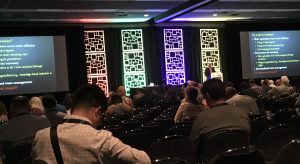
In a variety of sessions different subjects discussed such as achieving sustainable development and Earth science, data driven science for Earth and Space, geo risks reducing, mathematics of planet Earth, glacier and ice cap modeling, time-variable gravity fields, multi signal positioning and remote sensing, the Earth radiation belts, advanced developments in solar physics, comparative inventories of water resources systems, advances in atmospheric dynamics, past and future changes in polar climate system, and seismic scattering and ambient noise.

In the “Achieving sustainable development: the role for earth sciences” session the speaker pointed out gathering information is not enough and the information should be analyzed properly. He said: “Involve community and change their mindset by educating them through a long term process.” Then he discussed the role of governments in making agriculture more “water efficient”. He mentioned that the renewable energy is cheap and with restructuring the economy and Decentralization of water management, we can achieve some goals. He criticized the local governments that don’t have long term perspective in water, forest and ocean management. The speaker emphasized: “Water crisis is not just demand and supply problem but the weak governing.” He added: “Chicago is a wealthy city and there is the lake and poor African American pay more for water.”

The next speaker asked the audience to Google search on global change and they would find Global warming appearing on the search; he pointed out that global change and global warming are not the same things. He discussed the interconnectedness of physical and biological environments and Global change and future earth. Then he talked about UN sustainable development,Political imperatives, United Nation office of risk disaster reductions and International Science Council and future of earth programs. He emphasized the need to focus on food security and increasing food production, Water availability and more research on Food science technology.

The next session was about the Lead frequency map algorithm and variations, and MODIS Time Series lead area. The presenter discussed the Slight decreasing trend in MODIS leads area and VIRS comparison using one satellite. He mentioned that Algorithms applied to 15 years of MODIS observations and Real time data. The next presentation was about Interpreting data differently and avoiding bias.He asked the audience: “How do you know the satellite measurement is accurate?” Later he discussed Models and boundaries, components and interactions. The speaker mentioned: “Sensitivity analysis can help us in model analysis.” He discussed Uncertain factors in model and Correlation vs interaction effects in model analysis.

Alberto Montanari from Italy discussed unsolved rebus. He talked about Natural variability of river flow in Italy. He showed many slides demonstrating several shades in the graph while temperature rising, Sea level rise, Rainfalls graphs. He discussed Testing models against data and physical evidence, how the reliability of data is questioned, Data vs models and Long term persistence. He said: “We can measure the parameters from 0 to 1.” He emphasized that “Physical evidence is very important.” He added: “I refuse the idea of focusing on one interpretation and I always consider all.”
(C) CTR Press

June 2019:
June 17-18, 2019:
Risk Management in a Challenging Global Environment
Milan, Italy
Risk Management in a Challenging Global Environment conference was a well organized event about analyzing the past, current and future financial challenges from academic point of view and discussing the latest and potential solutions. A variety of participants from financial sectors and universities gathered together to discuss the risk management. As one of the chairmen of the conference, Oliviero Roggi from University of Florence pointed out the main objective of the conference was discussing recent advances in risk management.
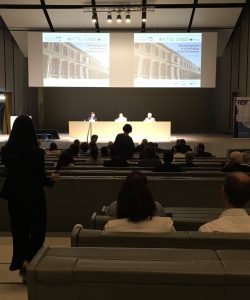
The speakers from a variety of countries were mainly academics and presented their researches in economics, finance and banking. Their focus was on the theories and tools developed in the field of risk management. The panels and speakers discussed large corporate leveraged loans, market perspective in European banking, credit cycle for global credit markets, the latest financial regulations, applying contingent claim analysis to corporate finance and Italian companies last decade trends.
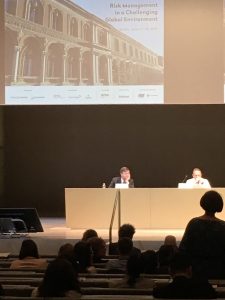
In the keynote session, one attendee asked about Global financial system and what would happen in 2021 (a possible crisis) and differences to what happened in 2008. The speaker pointed out that “ the recovery rate will be different.” Board gender diversity, Directors and voting, Leverage lending when the bank is in the stress, Trouble and disclosure requirements and Shareholders voting vs directors votes were discussed. The speaker said: “Fully independent board nominating committee raises the fraction of independent directors on corporate boards.”
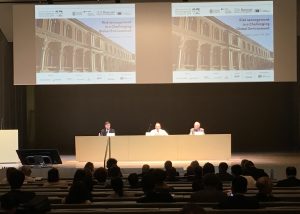
Barbalau, an academic from Canada discussed her PhD thesis on information choice, shock Transmission and contagion. She proposed a model about the risk factors that decision makers are facing. She argued that the impact of a shock increases with exposure to it and raised the question of the mechanism through that the impacts of shocks decreasing with exposure. She talked about Uncertainty and constraints, Solution optimal factor specific processing capacity, Implication in terms of uncertainty and Diversification to reduce the risks. She also discussed Positive shock and when economy lose the chance to take advantage of it.
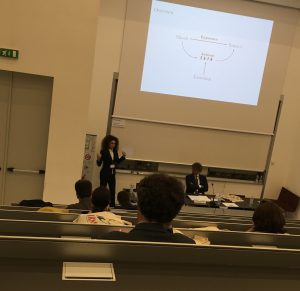
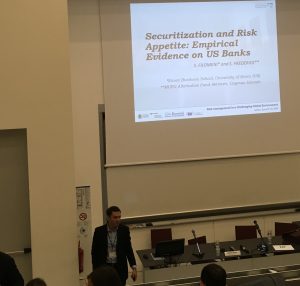

The next speaker Filomeni talked about securitization and risk appetite and empirical evidence on US banks. He said: “Before financial crisis, Banks increasing their risk appetite.” He discussed the effect the securitization during the financial crisis. He mentioned that the securitization of mortgages triggered the crisis effect.(C)CTR Press
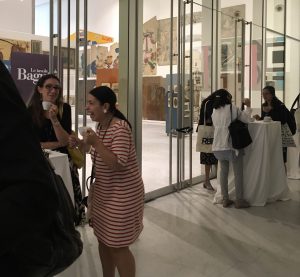

June 1-4, 2019:
Rome Culture
Rome, Italy
The ancient city of Rome is a must see destination for those interested in culture. There are lots of archeological, cultural and entertainment places to visit. Visiting all the cultural places and sites in Rome needs at least one month time period and if you are interested in deeper research and study of the artifacts, you need a three month stay minimum. There are hundreds of churches in Rome and the majority of them had been painted and decorated according to the tradition of the time period they were built.
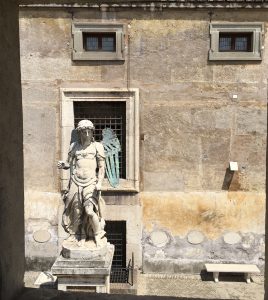
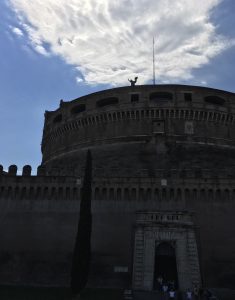
One magnificent castle to visit is Castle Sant’ Angelo or better to say Castel of Michele Archangel. The visitors have the opportunity to see a variety of artifacts related to Saint Michele: sculptures, statue and paintings on the wall. Just feeling the ambiance of walking inside the castle with the statue of Saint Michale on the top is an unforgettable experience. It was originally commissioned by the Roman Emperor Hadrian as a mausoleum for his family. Now it is a remarkable museum. According to the legend, Archangel Michael appeared with his sword at the top and it was a sign of the termination of the plague of 590. Raffaello sculpted a marble statue of Saint Michael holding his sword to combat the demons for the roof of castle. Later in 1753 it was replaced by a bronze statue of Saint Michele.
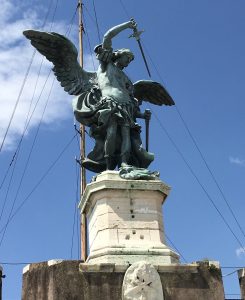

The grand loggia was completed in 1543. Paul III started an archeological and decorative campaign at Castle Sant’ Angelo. In 1627 the construction of the high altar began. In the Perseus Chamber the visitors have the chance to watch the breathtaking paintings portraying the Ovid recounts of Metamorphosis. Perseus is a mythical hero who defeats Gorgon Medusa, the monster that turned anyone looking into his eyes to stone.
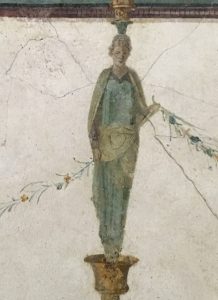

Galleria Borghese exhibits the 16th and 17th centuries paintings including Mannerist, Ferrarese, Lombard, Bolognese and Florentine paintings.The Borghese collection is considered one of the most beautiful art collections in the world.Entering the palace Borghese, the visitors are fascinated by the beautiful paintings on the ceiling and attractive sculptures in the middle of the room. The visitors are attracted to the statue of Paolina Borghese by Antonio Canova. Paula was the sister of Napoléon Bonaparte. Canova created it in 1808.

Galleria Borghese highlight is the sculptures by Gian Lorenzo Bernini. Ratto di Proserpina that was created in 1622 by Bernini is unbelievably realistic. It shows the abduction of Proserpina by Pluto. Bernini and Canova were the real masters in sculptures. Bernini had the talent of showing the intense psychological states of his character in his art. There is also a creation of three heads monster dog that reflects the portrayal of ancient stories in his artwork and intensify them with the characters’ state of minds. It is very powerful and its strong effects on the visitors was quite obvious.
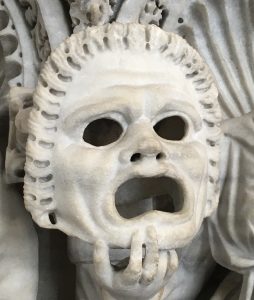
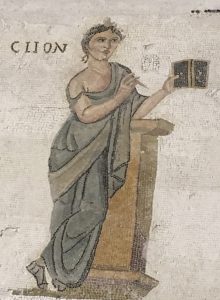
There are many warriors that are symbols of fight against demon in different culture: Saint Michael (in French Michel, in Italian Michele, in Spanish Miguel) leads the God’s armies against Satan forces. In Persian culture, there is Rostam who fights evils; he is the most celebrated legendary character in Persian culture; in 976 AD, the magnificent poet, Ferdowsi began his poetic journey that lasted for 30 years; it is about warrior Rostam who fights against evil in epic poetry and he goes through a variety of adventures involving mythical creatures. Ferdowsi was born in 935 AD in a wealthy and noble family; during thirty years period he spent all his money for creating the epic poetry, The Book of Kings, in Parsi language it is called Shahnameh. His goal during those 30 years was to revive the Ancient Persian culture and language after the Arabs invading Iran. And he was successful because the epic stories had been told from generation to generation. The emphasis of Ferdowsi poetry is on wisdom and pure spirit. It has been translated to many languages. Another character in another culture is Chulainn in Irish culture who single handedly fights the evils.
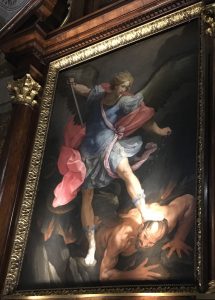

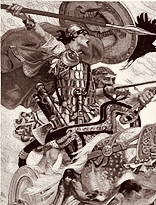
Guido Reni, the exceptionally talented painter of 16th century portrayed Saint Michele for the Church of Santa Maria della Concezione Cappuccini; it was completed in 1636. The original is still in that church and one copy is held in Vatican and third copy is on display at the church of San Marcelo al Corso in Rome. This is a controversial masterpiece; there were rumors that Reni portrayed the Satan that was crushed under St Michael’s foot with the facial features of the powerful Cardinal Giovanni Batista Pamphilj. Many researchers have found a strong resemblance. Reni’s artworks is highly appreciated in the world especially in Italy, France and Spain. Many Spanish Baroque artists such as Jusepe de Ribera were highly influenced by his art. In France it has been praised; Stendhal mentioned that Reni must have had a French soul.

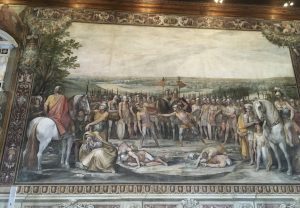
Musei Capitolini has beautiful collections of the 15th century. At the end of the 19th century after Rome was proclaimed as the Capital of Italy in 1870, many ancient art works that were found in the excavations were added to the Museum’s collections. The collections are on display at three buildings: Palazzo dei Conservatori, Palazzo Nuovo and Palazzo Senatorio. The two buildings are linked by an underground tunnel. The Palazzo Nuovo houses the ancient sculptures: Roman philosophers and emperors. On the second floor the artworks from the Middle Ages to the 18th century are on display.



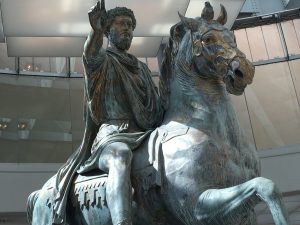
In the hall of Horatii and Curiatii, their fight has been portrayed on the wall. The ceilings are breathtakingly beautiful; each room depicting a special story. Visitors who follow the stories behind each artwork are happily surprised by gaining so much knowledge about history of art and ancient literature. Visiting these museums are more effective than reading about art history or attending a course about it.
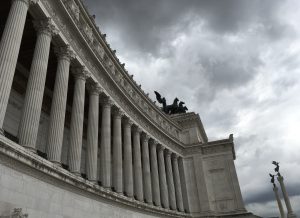


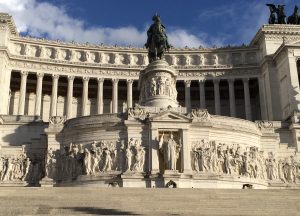
Museo Centrale del Risorgimento has many drawing about Napoléon Bonaparte. There are both: some very positive ones and some negative ones. The visitors who pay attention to the creators of those drawing come to this conclusion that the negative ones are drawings by English cartoonists and have some sort of bias in them with the aim of humiliating a great man. There are many interesting political cartoons that challenging the situations before and after World Wars. And there are some cartoons from the late 19th century. In 1848, the uprising in Palermo led by Pilo forced king Ferdinand II to allow the adoption of a Constitution.
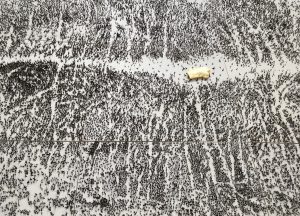

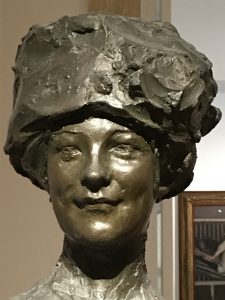
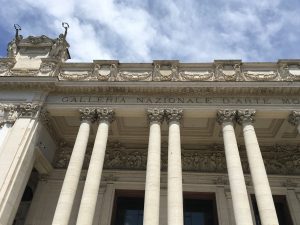
Galleria Nazionale d’Art Moderna visit is a very pleasant one; its warm and interesting ambiance and culturally rich artworks on display makes it an unforgettable experience. The modern artist Giuseppe Penone artwork covering a huge wall; it shows the wall covered by numerous small blacks sharp objects and suddenly in the middle the visitors can find a small gold piece: a challenging and beautiful experience. The curators of the exhibition have shown some taste by leaving one interesting sculpture by Canova, Ercole and Lica, nearby.
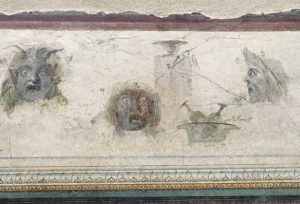

In National Roman Museum /Palazzo massimo there are many beautiful sculptures in the large size that are made using copper, tin and lead mixed in different proportions. Especially use of copper for highlighting lips and bruises created a splendid image that lasted through several centuries. In some statues the eyes that were made of different materials such as ivory, semi precious stones or glass paste were missing. The museum has fascinating collections of mosaic. The focus of the museum is on pre and early history of Rome. On the villa Doria estate along the western slope of Gianicolo Hill, a complex of tombs dating from the Imperial Age was found. It was excavated in 1838 and the large burial room that could hold 500 lucules is still visible.
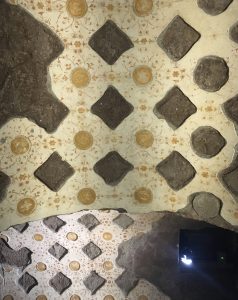
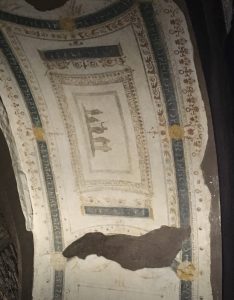
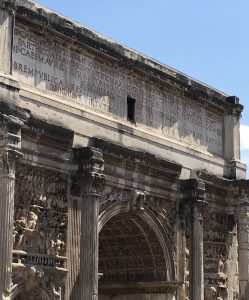
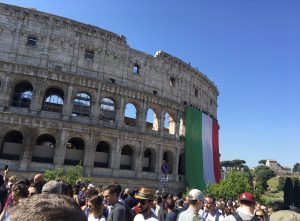
Roman Forum and Colosseum visit takes visitors to a long and fascinating journey. A newly opened museum on excavation site attracted the attention of the visitors. The amazing ceiling that goes back to AD has been restored recently and the visitors in the group of ten with a local guide explore the underground excavation site.
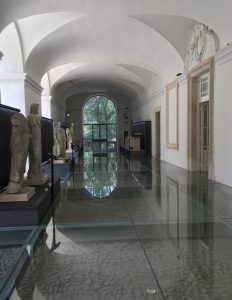

Villa Altieri in Rome will be open to the public next year. This year members of the Press and researchers can reserve a timetable in advance to visit the villa. Currently the cultural events are held in the villa. It has some rare archeological collections.

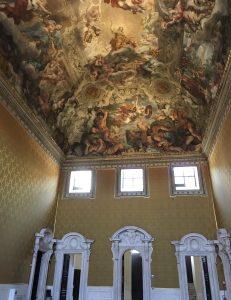
The southern wing of the Palazzo Barberini displaying the painting by Carlo Viva, the Battle of Constantine and Massenzio that were executed by Belloni in 1667 to replace the original one at the request of the cardinal Barberini . The painting Saint Mary by Reni is on the display and lots of visitors taking pictures of it. Garofalo’s painting of Claudia Quinta is amazing; depicting pulling the boat by the statue of Cibele. Another painting portraying the epic poem, Adobe,1623, by Marino shows a scene at the inn with the explicit allusions to the five senses: the drinker and the cook referring to the senses of taste and smell; musicians to the hearing sense; the busy woman reading the palm to the sense of touch and the gentleman with the red hat referring to the sight sense. (C) CTR Press
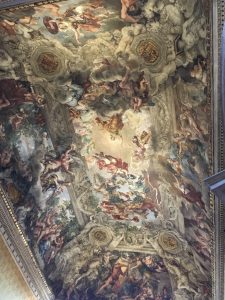
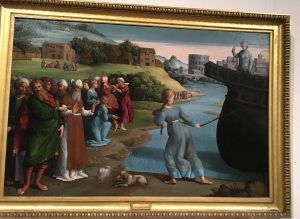
May 2019:
May 2019
April 11- May 6, 2019:
Latest Exhibitions in Milan, Como, Turin, Bergamo, Romano, Verona, Padova, Geneva & Lyon
Milan:
Civico Museo Archeologico
Pinacoteca Ambrosiana
Museo Poldi Pezzoli
Milan Design Week
Brera Art Gallery (Pinacoteca di Brera)
Como:
Museo Archeologico Paolo Giovio
Musei Civici Como
Turin:
Palazzo Reale di Torino
Palazzo Madama
Museo Egizio
Museum of Cinema
Museo Nazionale del Risorgimento Italiano
Bergamo:
Accademia Carrara
Museo Delle Storie Di Bergamo
Verona:
GAM
Museum of CastelVecchio
Padova:
Musei Civici agli Eremitani
Palazzo della Ragione
Museo di Storia della Medicina in Padova
Venice:
M 9 Museum
Geneva:
International Museum of the Reformation (Musée International De La Réforme)
Musée D’Art Et D’Histoire, Genève
Lyon:
Musée Des Beaux-arts De Lyon
Milan
Civico Museo Archeologico and the church of San Maurizio are must see destinations for all: both those who love culture and reflecting deep on history through cultural manifestations and those who just simply enjoy watching beautiful and magnificent paintings. The collections of the museum including the history of Mediolanum with the Ancient Milan section. The visitors have a chance to see the urban layout and architecture of Milan from the 1st to the 4th century AD. The museum area consists of a tower overlooking Via Luini. The Early Middle Ages section displays materials that feature Longobards and physiognomies. The Greek section displaying Greek world and its decorative vases.
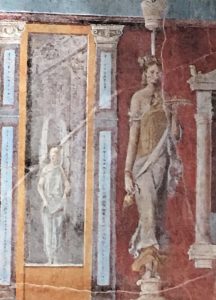

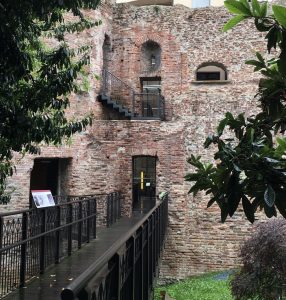
The museum is located beside Monastery Maggiore that is annexed to the church of San Maurizio. Its foundation goes back to the eighth century. It is magnificently painted throughout by the talented painter Luini. Bernardino Luini presenting images of saints and the Last Supper on the hall of the nuns. In the Greek section the visitors see some interesting images of Sappho. She was an Ancient Greek poet and is regarded as one of the greatest lyric poets. Unfortunately most of her poems have been lost except the one called: “Ode to Aphrodite”. Sappho was from a wealthy family and was a political poetess and as the result she and her family were exiled to Syracuse, Sicily in 600 BC.

Pinacoteca Ambrosiana is a fascinating cultural place and magnificent works of arts are on display. It was founded in 1607 by Cardinal Borromeo. A variety of artworks, paintings, manuscripts and sculptures are on display. The sculpture Pompeo Leoni in the 16th century managed to obtain Leonardo da Vinci writings and papers. Codex Atlanticus is an incredible collections of 1119 papers, writings and drawings by Leonardo da Vinci in a variety of subjects such as mathematics, geometry, astronomy, philosophy and engineering in the period of 1478 to 1519. In 1796 following the conquest of Milan by Napoléon they were taken to Paris and then they were returned by intervention the famous sculpture, Canova. The current exhibition allows the public to visit and admire some sample of Codex Atlanticus by Leonardo da Vinci.
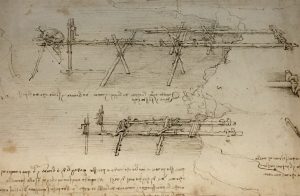
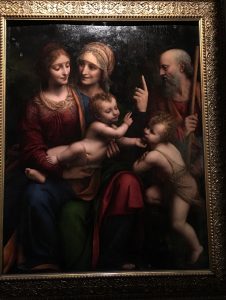
Sala del Cartone di Raffaello is amazing; it is a part of collections by Borromeo. The School of Athens is a fantastic drawing showing the famous figures of different periods, all in one set of drawing: Plato, Aristotle, Socrates, Diogenes, Archimedes, and Zoroaster. The two main subjects are Plato on the left and Aristotle on the right: Plato holds the book Timaeus and Aristotle holds the book Ethics. Most noticeable one is Diogenes sitting in the middle alone that reminds the visitors of his habit and desire to reduce the contact to the essential and avoiding any unnecessary communications.
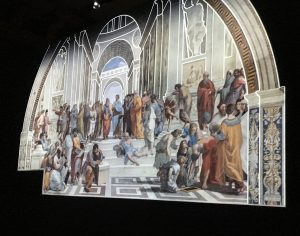

Another notable figure is Zoroaster founder of astronomy. Zarathushtra was an ancient Iranian prophet and ethical philosopher. He initiated a movement that finally became the dominant religion in Ancient Iran. According to Diogenes, Zoroaster lived five thousand years before the Trojan War. He mainly taught the Free Will. Zoroaster believed in eternal struggle between truth & lie: (asa and druj). So according to him the purpose of life is the victory of truth over lies, good over bad. Zoroaster believed in individual responsibility for one’s deeds; he believed in the freedom of the individuals to choose right or wrong and face the consequences. He emphasized three principles: Good thoughts, Good words and Good deeds. Other religions who believe in God, only one God, such as Christianity, Islam and Judaism were influenced by the ethical values of that teaching.

Diogenes was a Greek philosopher who believed virtues must be in action not in theory. He followed a simple life style to criticize the social institutions that he believed was corrupt. He used to carry a lamp during daylight and claiming he was looking for an honest man. He used to mock Alexander the Great both in public and to his face. There is an amazing painting in Marseille showing Alexander came to visit Diogenes and telling him that he was ready to fulfill any wish he desired. Diogenes replies: “Stand out of my light.” Diogenes profoundly detested pretentious behavior, both self deception and deception of others and artificiality of human behavior.

In the Museo Poldi Pezzoli, a rare Persian carpet from Tabriz are on permanent display. This breathtaking piece of art is on display in the first room on the ground floor. The visitors are fascinated by this rare piece. The carpet was wowed in 1542 in silk and 4100 knots per dm. The center is decorated with birds and flowers and a Persian poem. It has symbolic design of fighting against beasts representing the Garden of Eden and eternal fight between good and evil, vice and virtue.
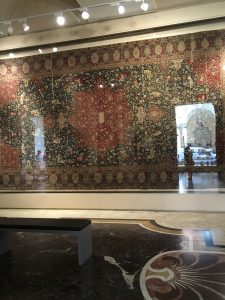


Milan Design Week was a set of exhibitions and it is considered one of the most important design event in the world. Design professionals, researchers, artists, architects and design students from around the world visited different design exhibitions during the week. There were a variety new furniture design such as a desk with charging panel: with door for charging devices via USB.


The Last Supper Performance directed by Loredana Putignani was performed by young actors from Brera Academy. It was showing their movements in the office environment in an surreal manner.
Brera Art Gallery exhibiting one of the largest collections of Italian paintings. The Pinacoteca di Brera is a part of the Palazzo Brera and includes cultural institutions such as Lombard Institute for Science and Art and the Academy of Fine Arts. It has some breathtaking paintings in its permanent collections. There is an allegorical deep painting by Lorenzo Leombruno, it is based on second century writer with a harshly thematic subject. The paintings by Rubens and Hayez that are based on the ancient stories.
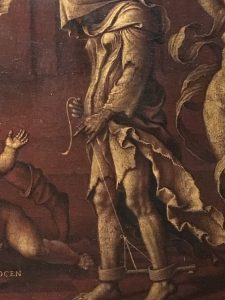
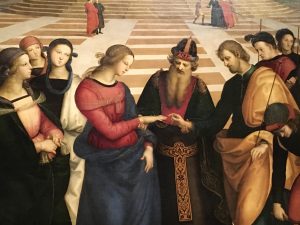
Como
Como Civic Muséum was founded after the Unification of Italy in 1861. It displays artifacts from different periods: from prehistoric times to the Iron Age and Roman period. The artifacts from Middle Paleolithic to the Mesolithic, 8,000-4,500 BC demonstrating the culture of those eras. The Bronze Age, 2,200-900 BC witnesses gradual perfection of variety of skills with their roots in the Copper Age. During the 6th century BC localized forms of pottery objects began to flourish. The ground floor exhibition demonstrating the Roman Period in Como through the object found there.
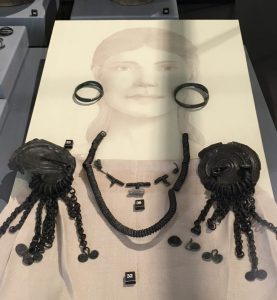
It also displays items and notable collections of Giuseppe Garibaldi.There is fascinating gold book in the permanent collection that attracts the attention of the visitors.
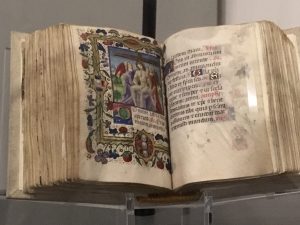
The exhibition Dream of the New City is a manifestation of the futuristic architecture in 1914 displaying the works of the main architect of that period.
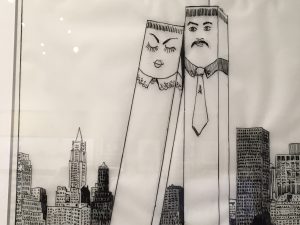
The paintings by various painters such as Moroni, Ferrari and Luini portraying Saint Michael, the archangel, leader of army of God against evil based on the ancient stories attracted the visitors attention and admiration.
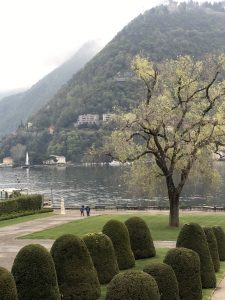
Turin
Palazzo Madama displays the entire history of Turin city. It was created as a Roman gate and later became a fortress in the Middle Ages. In 18th century it became the royal residence of the Savoy family and in 19th century, King Charles Albert chose it to be the first Senate seat of Kingdom of Italy. And since 1934 it has displayed the antique collections of the Museo Civico. The precious artifacts from 13th to 16th centuries are on display in the Acaia Gallery.
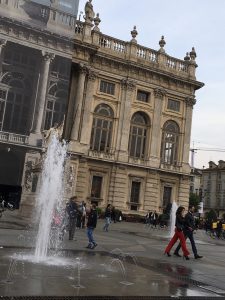
Palazzo Barolo in turin is also a must Museum to visit; the guide is very professional and gives visitors lots of information about the history of the palace and there are many documents and artworks of Napoléon era on display.
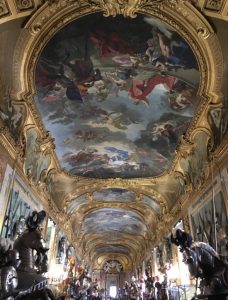
Palazzo Madama current photography exhibitions presenting the photos by American photographer Steve McCurry. It is an interesting thematic photo exhibition and the subject is reading the books. He is portraying different people from a variety of countries and cultures while they are reading a book. Beside each photo, there is an interesting quotation about appreciation of reading a good book. The most powerful ones are the picture of Afghan girls at the school and an elderly lady in the rural era of France reading a book.
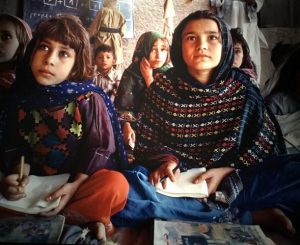
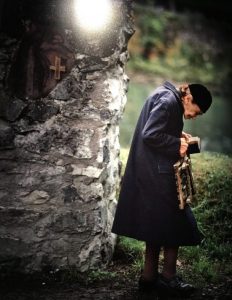
Museo Egizio is located in a Baroque building in the center of Turin. It was founded in 1824 and displays 42,000 artifacts covering 4,000 years of history, culture, archeology and art. It is considered the oldest museum of Egyptian antiques in the world. In the mummies section the curator of exhibition reminds the visitors that the Persian doctor Razi (854-925) was the first scientist that used the term “mumia”. Razi was a genius who made outstanding contributions to the various fields. He recorded over 200 manuscripts in medicine and according to the World Health Organization, Razi’s essays on infectious diseases was the first scientific treatise on that subject.
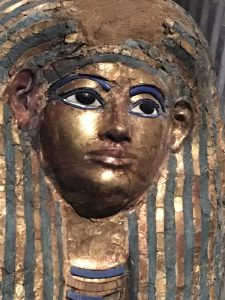
Museum of Cinema in Turin is must see destination for film enthusiasts. They can visit different sections and get the firsthand experience and knowledge about the history of cinema.
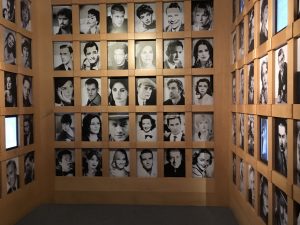
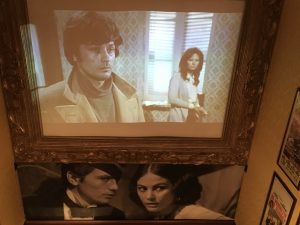
Museo Nazionale del Risorgimento Italiano is in Palazzo Carignano with a beautiful and cultural surroundings and atmosphere. It has rare and fascinating political cartoons and drawings illustrating the social and political situations in the late 19th and early 20th centuries. There are two rooms dedicated to the collections about Napoleonic Italy: 1800-1814.
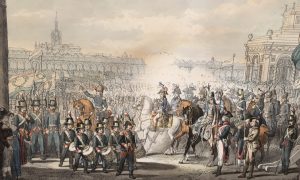
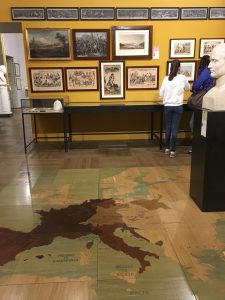
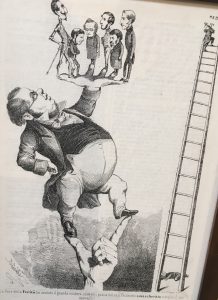

Bergamo
Bergamo is a beautiful ancient city. The foundation of its ancient cathedral goes back to 5th cent.AD. In 1137 Santa Maria Maggiore was constructed. The Carrara Academy is one the most interesting museums in Italy. It was founded in 1796. The collections present artworks from five centuries. The Renaissance collections displaying paintings by masters such as Bellini, Foppa and Mantegna. Some masterpieces from the 16th to the 19th centuries are on display. The visitors have a chance to view paintings by Moroni, Raphael, Tiepolo and Hayez and enjoy the first hand experience of observing the masterpieces. Academia Carrara offers a variety of events for people who are interested in arts and it holds 1600 paintings and 100 sculptures. The real life faces portrayed by Giovanni Battisti Moroni are on display.
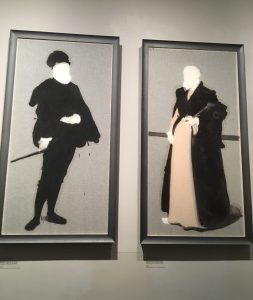
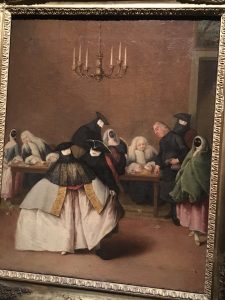

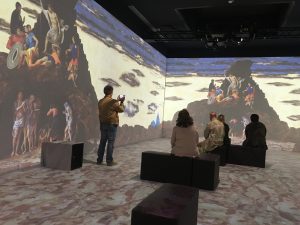
Museo Delle Storie Di Bergamo invites the visitors to go and listen to the stories of history of Bergamo. In the heart of Piazza Vecchia stands Campanone, a 53 meter high tower with breathtaking view of the old town. In the upper town, there are a variety of monuments, churches and museums and visitors of the museum have the chance to listen to the stories about the history related to each place. Each monument has fascinating architecture and each has a unique beauty and special atmosphere surrounding it.

Romano
Last supper by Moroni is a unique masterpiece and it is one of the most underestimated masterpiece in the world. It deserves to be placed beside Last Supper by Leonardo da Vinci: two unique masterpieces. This unique masterpiece is located in the church of Santa Maria Assunta. It is unique because Moroni added another person to the Last Supper paintings. There has been much speculation about the identity of the man in the black who is the only one standing. The church officials mentioned that the man is the painter himself and some researchers who have done extensive research on Moroni believe the same. But there are some other interesting opinions as well.
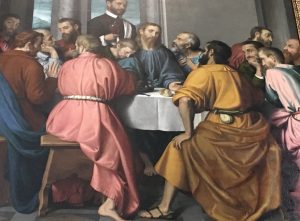
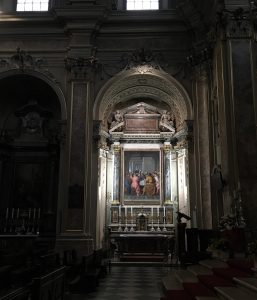
Verona
In GAM, the paintings from 19th century Verona are on display and visitors have a chance to know more about this historic city through a variety of paintings from that period. In the permanent collection, there is a powerful painting by Molmenti portraying Dante story about a woman unaware of her fate is led by her husband to a sinister stone castle. He was a pupil of Hayez. There are some paintings by Hayez portraying the Italian pro unification battles in 1848.
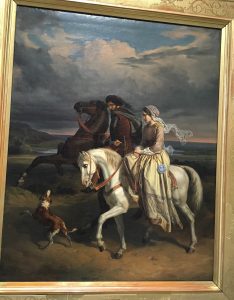
Mauro Fiorese photographic arts are on display and it is curated by Nuzzo. The exhibition focuses on Treasure Rooms, a series of photographs of the behind the scenes of the museums. “The invisible treasure chests full of history and culture” was photographed by the talented artist: Mauro Fiorese. Throughout the exhibition walls alongside the photos, the artist’s thoughtful quotes are on display. Each photo is a type of reflection on the systematic management of collections and storage rooms in the museums. There are special places that are used for the research purposes and technical experimentations. Fiorese was teaching photography for twenty years. In January 2016 he was invited as cultural leader at the World Economic Forum in Davis and he passed away at the age of 46 in December 2016.
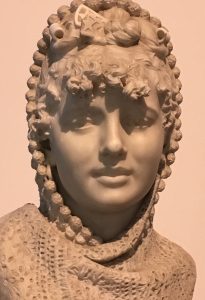
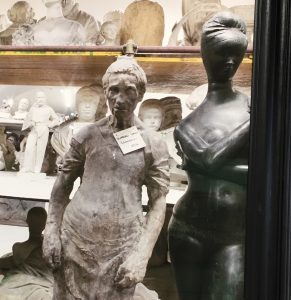
CastelVecchio was built in 1356 in the location where a small fort was built during Roman times to control and connect the two banks of the Adige river. The castle was used as a military stronghold and now it is an interesting museum that displaying historical art work from different periods. There is an outstanding painting by Mocetto that is called “The Justice of Trajan”. Walking through the halls of the castle is an amazing experience for the visitors that can feel a hint of atmosphere of that period of the history.
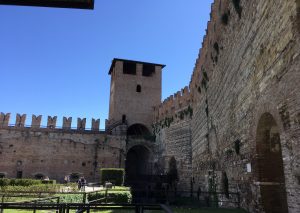
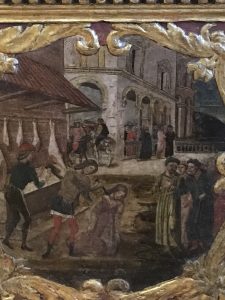
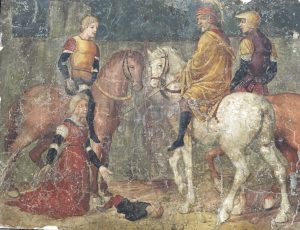
Padova
Musei Civici agli Eremitani displaying 16th century paintings in Padova that was influenced by Titian’s sense of color, realism and Lombard concept of perspective. There is an Ultima Cena painted by Girolamo di Romano with a new concept. There is also a beautiful Tapestry with the decoration of wool and silk interwoven with gold that goes back to the first quarter of the century.
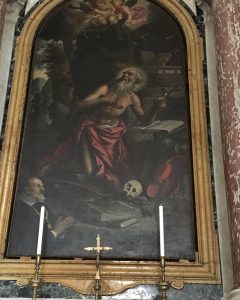
In January 2020, it will be it will be the 100 birth anniversary of Federico Fellini. The exhibition dedicated to Fellini displaying all sorts of material: pictures, paintings, drawings, posters and costumes related to the movies made by Fellini. Fellini is the elevated figure and very highly regarded in Italy. La Strada was one of his most esteemed movie. It is a very deep and meaningful movie. Fellini described La Strada as such: “a complete catalogue of my entire mythology world, a dangerous representation of my identity that was undertaken with no precedent whatsoever.” Anthony Quinn who was the main actor in La Strada called his experience of working with Fellini as the most valuable experience in his acting career: “I learned more about film acting in three months with Fellini than I had learned in all the movies I had made before then.

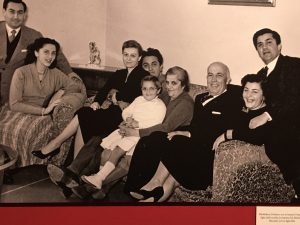

Palazzo della Ragione has been civic, economic and political center of the city from the Middle Ages. Other historical building around the square have had important roles in the history of Padova too. The Architect Andrea Moroni built Palazzo del Podestà in 1541. The three arched four sided patio has Doric columns that are outstanding. Palazzo della Ragione was built in 1219. The large roof was composed by 116 vaulting ribs in wood. The architect Rizzo rebuilt the vault exactly the same. The covered market on the ground floor has been there for 800 years.
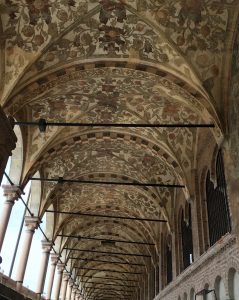

Museo di Storia della Medicina in Padova is all about the time that University of Padova was the center for Science. Padova University was established in 1222. Intellectual freedom and financial resources made Padova University, the European capital of Medicine in 15th century. In 1599, Galileo Galilei was one of founders of Academy of Science. The exhibition shows the progress of medical technology and the study of human anatomy. There are a variety of interactive devices that challenging the scientific knowledge of the visitors; various questions and puzzles about how the human body works addressing people with different level of knowledge.
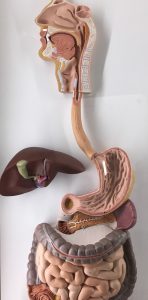
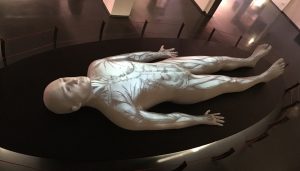
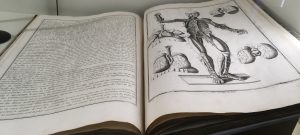
Venice, Mestre
M9 is a multi medial and interactive museum. The museum using most advanced technologies with the aim of achieving a better understanding of the past and imaging the future and how it will be like. Different sections of the museum are divided into themed areas: comparing the past and the present through multi media devices. The sections are as follows: the way we were vs the way we are showing demographics and social structures; Italian way of life, consumption, traditions and lifestyles; science, innovation and technology; money,money, economy and production. It covers everything from food, cinema, entertainment to science, history and technology.
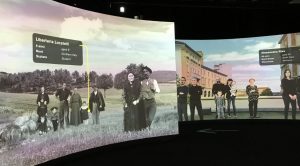
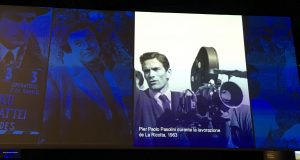
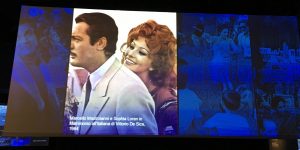

In the photography exhibition a variety of photos mainly in black and white by Italian photographers are on display. The photos by Mario Cresci are both beautiful and powerful, they take the visitors to an interesting journey of reflections on different aspects of life and photography. M9 architecture is unique and the atmosphere is very pleasant.
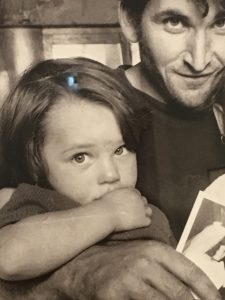


Geneva
Musée D’Art Et D’Histoire in Genève is one of the largest museum in Switzerland. It was built in 1903-1911 by the architect Marc Camoletti. It displays beautiful paintings from different periods: from the Middle Ages to the 21st century. The paintings are Italian, Swiss, French and Dutch schools. The works of arts by Rembrandt, Modigliani, Cézanne are on display.
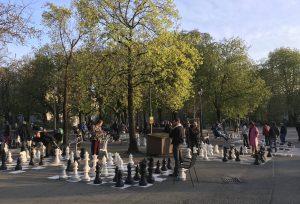

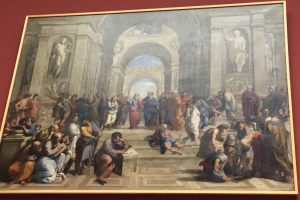
The latest exhibition is the Caesar and the Rhône, ancient masterpieces from Arles. Thirty years of underwater excavations, the link between the Mediterranean and the Gauls river network is evidence of early Romanization and spiritual exchanges.
In the International Museum of the Reformation, Serge Bloch and Frédéric Boyer have created many animated short films and books to demonstrate the old stories in words, images and sounds. The stories of great ancient empires: Persia, Greek, Sumer and Egypt.
The Museum presents a chronological account of the history from 16th century to the 21st century through 630 documents and interactive display. John Calvin founded the Academy in 1559 and it was a turning point for the clash between Catholics and Protestants in Geneva.

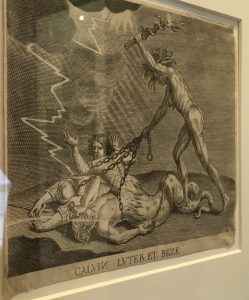
There was a variety of animation videos based on the ancient histories such as leaving the paradise and two trees: the tree of life and the tree of knowledge of good and evil and how the good and evil forces are in constant fight. An interesting animation of Babel showed the story of a great tower that would shelter all people throughout Mesopotamia over 4000 years. Frédéric Boyer says:”I would use words and Serge would use drawings to tell the story and this is what makes the work so specific.” Serge Bloch adds:”I have tried to measure up to those fantastic Biblical stories that are full of violence, poetry and visions.”

Lyon
The Museum of Fine Arts of Lyon is situated within the walls of a majestic Benedictine abbey which was built in 17th century. It has 71 exhibitions rooms that displaying outstanding and remarkable collections of antique arts. The works of arts on display including Renoir, Rembrandt, Monet, Ingres, Poussin, Picasso, Chagall, Gauguin and Matisse. A very interesting museum with the nostalgic atmosphere; the image of France that has been associated with chic, elegance, ethics and respect for women is gradually weakening as the result of growing Arab population who live in France. In Italy, the Italian culture is still intact. On the street some African people with their hats in their hands are begging for the money; but it is trivial and the happy and delightful Italian culture still fascinating the visitors.

There are many fascinating paintings in the permanent collections of the Museum of Fine Arts of Lyon such as painting by the Lyon born painter Paul Chenavard portraying different traditions of different religions and historical figures such as Napoléon Bonaparte.
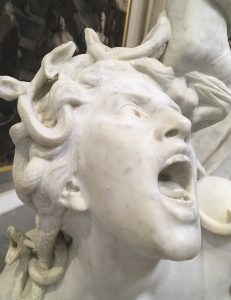
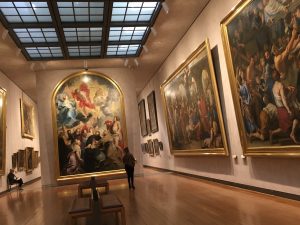
There is a powerful sculpture by Marqueste. There are some interesting collections belonging to 2500 years ago Ancient Iran, Egypt, Greek and Roman. In different parts of the museums, the art enthusiasts from the early age to elderly people are busy painting their favorite sculptures and the atmosphere is very delightful. (C) CTR Press
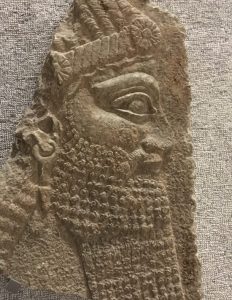
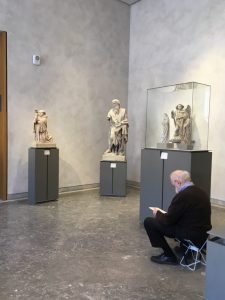

April 2019:
April 4-7, 2019:
Milan Culture 2019
Milan, Italy
Santa Maria delle Grazie: The Last Supper
Milano Palazzo Reale: The Artistic Life in Napoléon Bonaparte era
The Sforza Castle of Milan: Giovanni Battista Moroni, Bernardino Luini & The Camera Picts by Roccabiana
Fondazione Prada: whether line
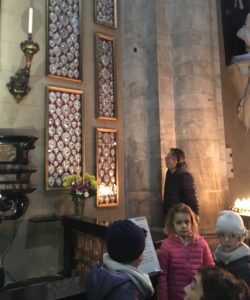
The city of Milan is a must see for those who love culture and enjoy visiting museums and galleries. It offers a variety of works of art both classics and modern. The architecture and unique paintings have added to the charm of this amazing city.
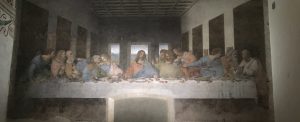
Santa Maria delle Grazie has a fantastic architecture and Leonardo Da Vinci’s masterpiece: “The Last Supper” has made it unique. No doubt this breathtaking masterpiece is unique regarding the use of perspective, facial expressions and body language. It was painted in four years between 1494 & 1498. Leonardo Da Vinci did an extensive research on different faces and facial expressions before making the preparatory sketches. It is amazing that it has survived throughout history. The English bomber planes struck the building in 1943 and tearing off the roof of the old dining room and it left this masterpiece that was painted on the wall to be in the open air for several years.
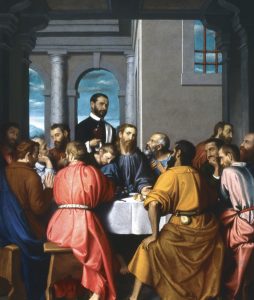
Other painters also have painted “The last Supper”. Giovanni Batista Moroni painted The Last Supper in the three years period: 1566-1569. He added another person to the scene: behind them a man standing and looking in the direction of the beholders. It is in the church of Santa Maria Assunta e San Giacomo Maggiore Aposto, Romano di Lombardia. It is a must see masterpiece too.

The current exhibition in Milan Palazzo Reale is about the artistic life in Napoléon era. A variety of painting of that era are on display. Napoléon was victorious in northern Italy and he was (and still is) a sort of popular idol not only in France and Italy but in some other parts of the world too. He contributed to the law, science and art considerably by prioritizing merit based not connection based approaches. The artistic life of that era reflecting the grandeur and glory of that period. The artists such as Ingres(1780-1825) during the era of Napoléon portraying heroic and moral implications. Andrea Appiani met Napoléon in his first campaign in Italy. He portrayed him with an olive branch that is the symbol of peace.
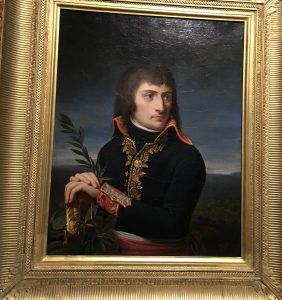
As Robert Asprey in his book about Napoléon points out the letter written by Napoléon to Talleyrand on August 23, 1803 about the invasion of England shows the other side: “However disastrous the war may be, it will never force French people, supported by justice and God, to bow before this arrogant race which makes a mockery of all that is sacred on earth.” The painting: The Death of Leonardo da Vinci by Ingres is also on display. Many portraits remain from Ingrid’s early years in Paris. He was famous for the accuracy of his vision and how he saw people and the way he portraying them.
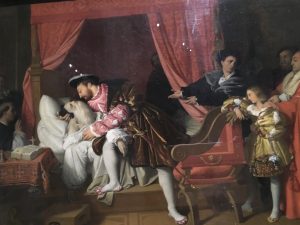
Giovanni Batista Moroni is considered one of the greatest painters of sixteenth century Italy. Galansino, one of the curators of Moroni exhibitions has described this magnificent painter as such: “No doubt Moroni is the greatest at showing you the person who is standing in front of you, not just the outer appearance but the inner man.” The painting: Martirio di San Pietro da Verona, 1555 is a powerful painting. The details: clothes, expressions, colors, points and references on this amazing art work proves that Galansino’s description of Moroni is no exaggeration.
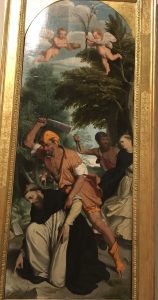
Bernardino Luini’s painting: Hercules and Atlas, 1515 is an outstanding painting.
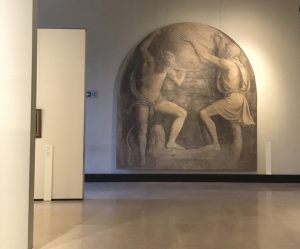
The Camera Picts by Roccabianca: stories of Griselda on the walls and constellations and planets on the groin vault ceiling are enchanting art works. A rich gold decoration dotted the painting and geometrical flowers decorated the ceiling. The signs painted on the walls and ceilings including Gemini, Mars, Libra and Sun. All portraying the story at the Pavia Castle and it goes back to 1466.

Now a glimpse of modern art: Fondazione Prada latest exhibition, whether line, is a new multimedia show from Los Angles based artists such as Fitch and Trecartin. This exhibition will have a four month run. There is a “magnifying glass on the current culture”. It was an exaggerated form and that was attracting the attention of the viewers.
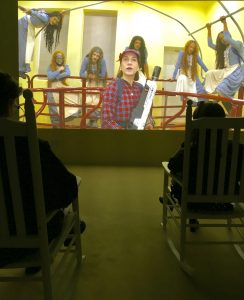
Different characters in the film repeating certain phrases in an unusual manner with a strange and strong make ups; the sentences and phrases are as follows: “it does happen to the rest of us.”, “my doors are always unlocked.”, “Is it the end of the world?”, “Laughing with a new direction to laugh.”, “I agree with everyone.” Disfigured characters and Artificial characters were intentionally designed to make the viewers to think. In the Press preview, the artists were not available for comment.
(C) CTR Press

March 2019:
March 18-22, 2019
Game Developers Conference (GDC2019)
San Francisco
The Game Developers Conference is considered the world’s largest professional game industry conference. There were about 30,000 attendees from around the world; they were game developers, artists, game designers, publishers, audio game professionals, business managers and those interested in game industry. There were a variety of tutorials, VRDC, educational sessions, film festivals, visual arts in game design and AI for game operations sessions.

The panelists and speakers discussed the latest developments in the game industry, AI and creating game design, the future of board games, flexible system designs, the ways of engaging game players around the world, designing immersive narratives for location based AR, the process of story telling in game design, marketing games, using videos through the game designs, how to engage and keep the audience, mixed reality storytelling, building games in the cloud, customizing the games with machine learning, immersive experiences from VR and AR Developers and the latest laptop games on the market.
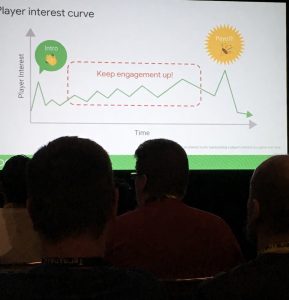
The speaker discussing the challenge of visual referencing for games pointed out that in audio game designs the key is keeping it simple and avoiding the complex procedures. She said: “Background music and sound effect is very important.” She added: “Don’t loose track of the picture in audio game design too.” She emphasized the goal that should be engaging the players from the beginning to the end and using voice as the controller.

In the session about shaping culture in social VR, the speaker discussed all space VR that creating social catalysts. He explained the different activities for focusing social engagement. He talked about embodiment and social mechanics, Embodiment action for preventing harassment and Communicative affordances and social mechanics. He emphasized using emojis as substitutes for gestures.
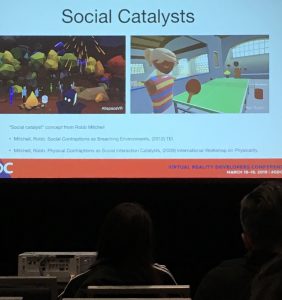
Peek from Microsoft discussed unlocking the potential for game data using Microsoft Azure. He explained Azure SQL Analytics and emphasized looking at the database for each query. He discussed a variety of Performance issues.

The panelists in the legal battle royals discussed the legal issues in game developing. They used two different hats during their presentations: one “lawyer” hat and another one: a “human” hat and during the session whenever they were talking from a lawyer’s point of view they were their “lawyer” hat on their head. Reid explained the copyright. He mentioned that copyright protects artistic expressions. He pointed out that in creating video game process, the registration helped the developers to be covered by copyright law. Ibrahim discussed the publicity and liability issues. She said: “The law is not clear about prizes and how it is distinguishable from the cash.” Boyd pointed out that if the game developers were successful they would face lots of lawsuits. He said: “If you have a small audience you can risk a lot. But for the large audience you cannot afford it, it is too risky.” McArthur said: “The point is to be consistent, not always right in creating games.” He mentioned that if the created video game using a character that looks like a character from another game that could be violating of the copyright unless “you have already obtained a license for it”.
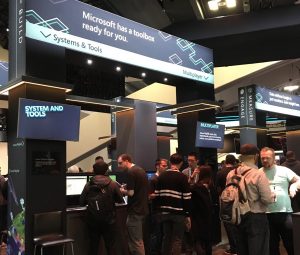
In the exhibition halls, the representatives from different companies from around the world discussing their latest products and services. The representative from USA Microsoft talked about the development loop: design, build, test and publish.
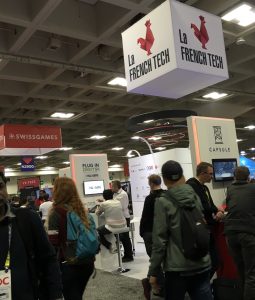
The representative from France in the French Tech pavilion explained that their activities are spread over forming a dynamic ecosystem, funding the gaming schools and finally creating the synergies by bringing together entrepreneurs, researchers and the students.
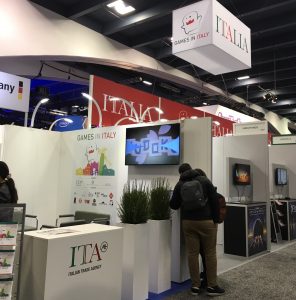
Games in Italy representative explained that over 120 game development studios operating in Italy that are skilled in educational projects, advergame and third-party projects.
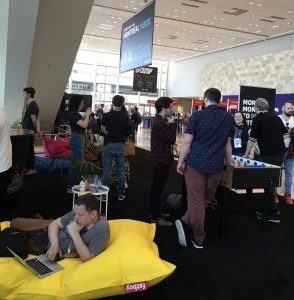
The representative of the Academy of Art in California explained how they brought the student developed interactive VR experience to Congress. She mentioned that the Art Academy enhancing the recent digital development.
(C) CTR Press
March 18, 2019
Human Centered Artificial Intelligence Symposium 2019
Stanford
HAI conference was organized by Stanford Institute for Human Centered Artificial Intelligence. The goal was discussing AI role in both work and everyday life and how to deal with increasing concerns for the future of humanity in AI age. HAI mission is collaborating with AI experts in a variety of fields: engineering, medicine, law, economics and neuroscience. As the founders explained their goal is enhancing humanity not diminishing it.
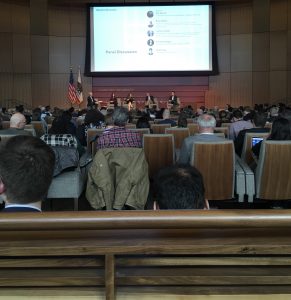
The speakers and panels were from Microsoft, Google, LinkedIn, Stanford Artificial Intelligence Laboratory, University of Stanford Law school, MIT, Harvard University and McKinsey Global Institute. They discussed understanding AI and expanding AI research. One of topic was AI in healthcare. The speaker pointed out human and machine working together to create medical record with appropriate encryption because we don’t trust anyone with our medical data and trying to train AI for dealing with the patients data. The panel discussed working with earthquake scientists and research on image recognition and algorithms.

Bill Gates mentioned that AI is an algorithm based software that thinks much faster and more accurate than human being but it can easily be misused. The speakers discussed AI boosted developments in medicine, education and governance. MIT professor expressed his concern about the future of AI and he pointed out that we need to do this property otherwise it will be unintended and unpleasant consequences.
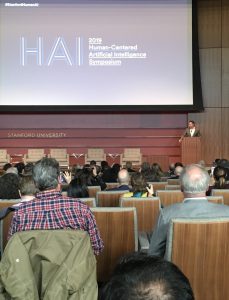
CA governor, Gavin Nelson mentioned that his campaign team advised him not to talk about robots because there are negative perception almost everywhere. He several times repeated the anxiety and concerns about AI and massive loss of jobs. He mentioned that manual jobs, cashiers, retailer jobs “all will go and it is anxiety inducing.” He pointed out that the main problem with new technology is that it doesn’t need people. He said: “The world we invented is competing against us.” He emphasized so many opportunities for California, Investing in future and Alternative jobs. He added that there are increasingly anxious feeling about the future of job while people working harder. He said: “California is the state of richest and the state of poorest.” Then he emphasized growth, inclusion, education and social justice.
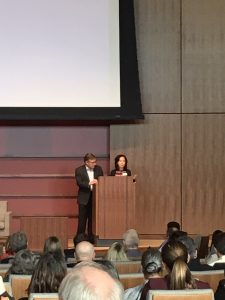
The speakers and panelists emphasized bringing human side in AI research. The idea of creating the Institute started with a conversation in 2016 between Etchemendy and Li who currently both are the directors of the Institute. According to the media reports Etchemendy had purchased the house next door and they are neighbors now. Etchemendy is a philosopher and former Stanford provost and Li, an AI pioneer was a VP at Google. She is a hardworking person and according to Blanco from CNN she was born in China and raised there and she arrived in the U.S. from China at the age 16 and did various hard jobs such as cleaning houses just to survive. The both directors called AI challenge, one of the greatest challenges of our time and hoped to create AI that is not just technological but humanistic as well. According to Manyika from McKinsey, Stanford is among the biggest fundraisers and “the cash is necessary if universities are to remain competitive in the field of AI.”

But as an attendee pointed out too much metrics such as computerized analysis based on statistics has further dehumanizing consequences rather than humanizing AI. He added that ethics and morality cannot be programmed and this initiative is another high budget and high tech effort to interfere with human life. Critics expressing concerns about letting more AI monitoring and controlling our lives that will be a serious threat to our privacy and ethics. Some people have some sort of nostalgic feeling for pre internet period, when there was no mobile phone or internet; life was less complicated, more human and even more enjoyable. (C) CTR Press
March 4-8, 2019
RSA Conference 2019
San Francisco
RSA Conference speakers in a variety of seminars and sessions discussed the latest in cybersecurity, privacy, emerging threats, rise of machines, cloud security architecture, analytics & response, cryptography, governance & risk, hackers & threats, security strategies and artificial intelligence. The panelists discussed CA consumer Privacy Act and compared it with EU GDPR. The speaker pointed out that just looking at the data activities is not enough and he emphasized the necessity of finding the data sources. He talked about the Senate judiciary committee hearing on GDPR. He said:”There are variations of GDPR in different countries; they handle data differently.” He added: “We should understand the activities in the systems.” He also discussed the right to be forgotten and data to be deleted on demand.
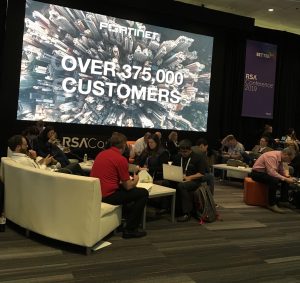
The next speaker discussed protecting data from the legal perspective and handling European customers data. He said: “Who is the owner of data in the cloud is a mess.” and he added: “when providing services to the customers we should know which type of actions to take for each case.”

The next panelists discussed facial recognition and privacy. They talked about Traveler verification service: a facial matching service and Using photo to verify identity of the passengers. Hardin mentioned that in the near future faces are used instead of boarding passes and the passports go away. Danisek explained how the system works: first building galleries for all the flights of the day and then taking the photos and matching them with the small galleries of each day. She said: “After matches being made it will be deleted in 12 hours.”
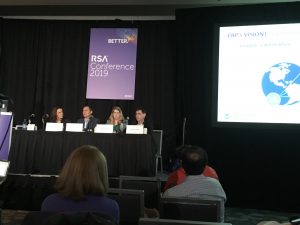
The speakers discussed the Privacy advocacy activists concerns and Human verification vs automated verification. Pierson pointed out that we should distinguish between Surveillance technology and identity verification system. In response to a question about the problem of identical twins distinguishing, the speaker mentioned that using the proper type of camera and lighting and advanced facial recognition technologies could solve it.
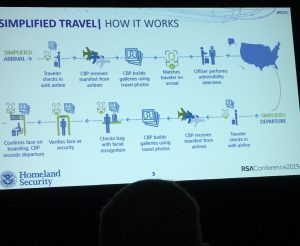
In the next session about US Federal Privacy Law, Brill Microsoft top privacy council and two other speakers from Google and Twitter discussed the privacy issues. Brill repeated several times: “Privacy is a fundamental human right.” She pointed out that in Microsoft Protecting data and Consumer choice are taken seriously. Brill who is deputy general counsel at Microsoft explained that they are committed to make sure that their products and services comply with GDPR.
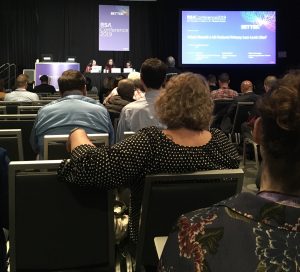
It was Microsoft vs Google and users privacy. Brill explained how consumers data is used and deeply embedded accountability. She raised this question: “Do people understand or consent how their data are dealt with?” One member of audience challenged the speaker from Google in how Google use the data and privacy concerns and how Google was fined by EU over privacy issues. Google track the users searches, the web pages the users visit and then delivering information that would be more relevant to each users and the process generating much higher advertising revenue for them. “Nothing is free.”
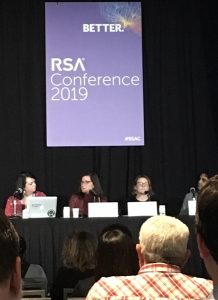
In the technical session, protecting financial institutions were discussed. The speaker explained that each year a billion attacks are traced. He mentioned that the rate of successful attacks has tripled and continues to increase. Adversary hackers or nation states using a variety of techniques in their attacking that usually goes far beyond the malware. The cybersecurity experts need to evolve their detection and prevention skills.

The next speaker discussed post quantum cryptography and protection in the cloud through multi cloud architecture that keeping the keys separate from the CSP. The next speaker discussed the latest adversary techniques based on real time observations and open source researches. (C) CTR Press

February 2019:
February 19-21, 2019:
Gravitation Conference
Rome, Italy
Gravitation conférence was organized by European Physical Society. The goal of Conference was discussing different aspects of quantum and classical gravity. The speakers and panelists talked about gravitational waves from data analysis point of view, relativity tests, and measuring G constant. The speakers discussed theoretical and experimental aspects of gravity. Mathematical gravity, geodesy, Einstein theory and gravitational waves were discussed.
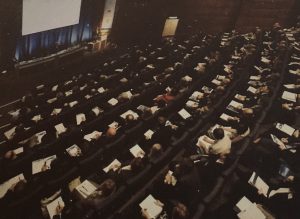
The speaker discussed Einstein nonlinear equation of gravity and how the equations could be made in weak fields. He pointed out that higher order form can increase accuracy. He talked about the ratio of the velocity of the matter that forms gravitational fields. “Parameterized post Newtonian formalism explicitly shows the parameters and it is used for comparing Einstein and Newton gravity theories.” “Light speed is constant in PPN formalism.”
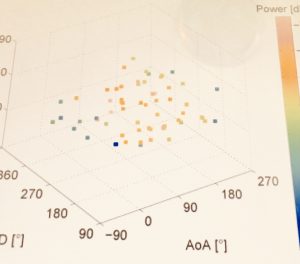
In the final session the Young Scientific Awards were given to the selected young scientists and researchers in the field of theory and practice of gravity. The speaker from Sapienza University of Rome discussed in detail measuring PPN parameters with radio link in space. And the speaker from the French Aerospace Lab talked about microscope satellite. The next speaker explained the dark energy and weak lending.

The panelist discussed the Planck scale structure which partially defines gravitational waves. “The waves normally bouncing off the barriers and passing through the horizon, but the membrane within length of horizon reflecting the wave and do not pass through the barriers.” Di Fiore mentioned that in the gravitational experimentation, the most notable elements is the source of gravitational field and for the accurate measurements the modulation the amplitude is necessary. (C) CTR Press
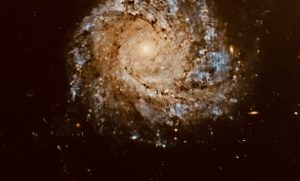
February 13-14, 2019:
Mobile Growth Summit 2019
San Francisco
Mobile growth and brand marketing professionals gathered together to talk about the latest innovations in monetization, user acquisition and user engagement and reengagement. The speakers and panelists in five tracks discussed blockchain, mobile marketing, mobile gaming, and emerging markets. They talked about the latest mobile app marketing tools and how to create contents for mobile brand marketing.

The speakers discussed AI and how it has transformed growth marketing and advertising processes. They discussed the real cost of baking AI into company’s UA. The speaker explained how to build an AI system from scratch and its best practices for mobile growth marketing. He pointed out how the value of tools growing and shifting and how an algorithm matures.
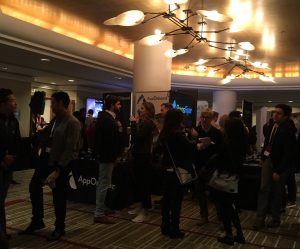
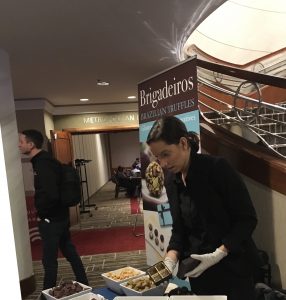
The next speaker discussed how an evolving ecosystem calls for evolved measurements. He discussed the case studies and explained how reengagement strategies can increase purchases. He discussed the ways of retargeting the users with customized advertising. He emphasized the importance of creating personalized and customized retargeting advertisements that bringing back the ex-customers and retaining the existing ones. The panelists emphasized the ultimate goal of monetizing and companies growth. (C) CTR Press

January 29- February 1, 2019:
DesignCon : Design Conference 2019
Santa Clara
Design Conference gathered design engineers and industry professionals from the US and other nations to discuss chip, board and cutting edge products and services. The panelists and speakers in the general, tech and educational sessions talked about the proliferation of design and technology, optimization for electronic design, 5G technology, machine learning algorithms for deriving models for electronics and system design automation.
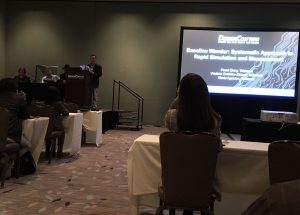
The panel discussing systematic approach to rapid stimulation and measurement talked about high speed data transmission and its loss of margin and the errors in BLW that caused by AC coupling. They demonstrated a method of rapid analysis of BLW on extreme cases of signals in PAM4. The speaker pointed out that Baseline W is especially harmful for multi level signaling. He added: “AC coupling causes the effect called DC or Baseline W. AC coupled channels are widely used.” He explained Step responses in channels with bandwidth limits, Pulse responses in channels with LFD and HFD and mentioned that Pulse responses can be a superimposing step response.
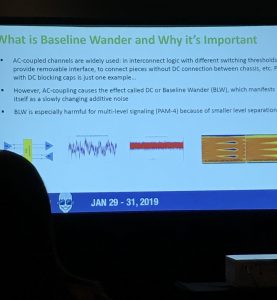
Discussing BLW error accumulation the speaker pointed out that since the integral of this error is not zero, it has a tendency to accumulate. The next speaker talked about Separating ISI and BLW components, Pros and cons of finite impulse response, Case of random uncorrelated input pattern and emphasized that Symbol values are completely uncorrelated.
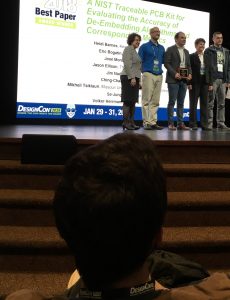
Keynote speaker, Robert Heath talked about 5G for vehicle to X communications. He started his talk by mentioning the diverse coverage of 5G in the media and how some saying that we have already had 5G and others saying it is a long way to reach it. “It depends to the media you refer to.” He added that it may sounds pessimistic but “Everybody got phone, so who is going to pay for additional phone or an extra $10 per month for the service?” Then he talked about the sensors and how most of the sensors are limited and need line of sight. He pointed out that Full automation requires GBPs data rates and ms latencies. He discussed DSRC different applications and Requirements for some 5GV2X use cases such as high reliability and low latency. He emphasized “Lower latency, higher reliability and Longer range, higher reliability.” He said: “Bandwidth and rate are lacking in cellular systems and 5G has a beam based system design.” He complained about the abundance of crazy Scooters in the colleges. And interestingly the prominent researcher on automated cars mentioned that he has a classic car and he likes it.
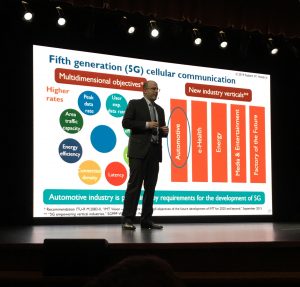
The next speaker talked about modeling system signal integrity for achieving optimal memory performance for DDR 4. Then the design engineer speaker discussed characterization of signal integrity using S parameters. He mentioned that failures in the process of qualification testing can be very consuming. He explained how using a vector network analyzer can be considered a solution. The critics of huge funding for automated cars arguing that all these money could be spent on improving transportation infrastructure, public transportation and public services: “Do we really need driverless cars?” (C) CTR Press
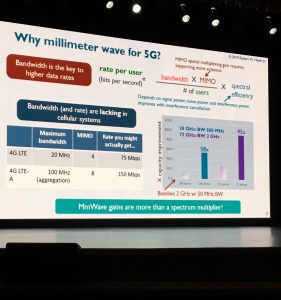
January 2019:
January 13-16, 2019
Fancy Food Show 2019
San Francisco
Fancy Food Show was organized by Specialty Food Association. The industry representing above $138 billion annually. The speciality food producers from around the world gathered and presented their products and discussed them with the quality buyers and distributors. In a variety of sessions, the speakers and participants discussed legislative and regulatory issues in the speciality food industry.
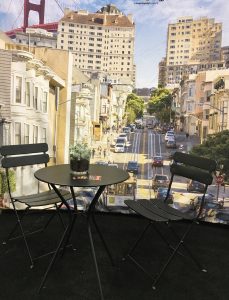
Innovation in the industry and how to present innovative products were discussed in many sessions. How women are reshaping the future of food industry, plant based food products and the latest innovations and initiatives in food industry were discussed. The speaker explained more sophisticated ways that can widen the market through adopting technology.
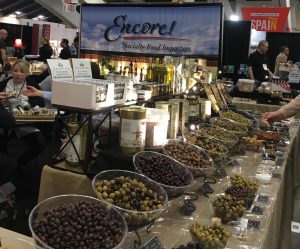
A variety of speciality foods with nutrient and rich ingredients were presented by producers from different parts of the world. Companies starting to think beyond sustainability and seeking more representative systems. SQF Institute provides SQF fundamentals program for small and medium sized suppliers. The goal is meeting the buyers requirements and helping to integrate robust food safety standards.
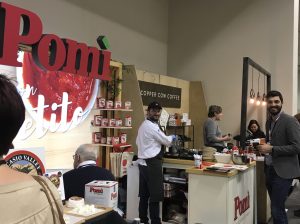
Pomi, an Italian company with offices in a variety of countries such as USA, was founded in 1982 in the province of Parma and nowadays is part of Consorzio Casalasco del Pomodoro, a cooperative of nearly 400 farmers who cultivating above 7,000 hectares. The company presented the traditional Italian Purée or passata di pomodori from sun ripened Italian tomatoes.

St Michel company making French biscuits since 1950, presented cookies and cakes from France. Loacker is considered one of the market leader in the wafer category and it was founded in 1925 as a small bakery in Bolzano, Italy. Their cookies has no coloring or preservatives. Feta PDO playing a key role in the Mediterranean diet and has rich and natural taste with high nutritional value.
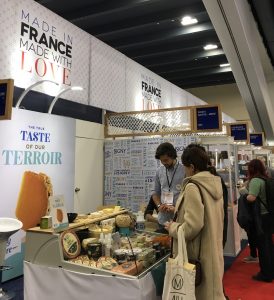
Real Salt is an American company providing an unrefined sea salt with unbeatable flavor. Maple Leaf farms presenting naturally applewood smoked duck bacon that has 57% less fat than pork bacon. Pinky Up tea company based in Los Angeles, CA and Seattle, WA providing organic teas.
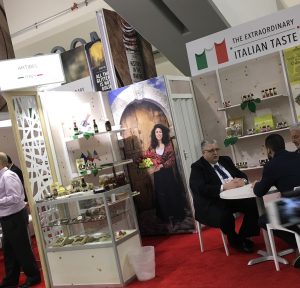
Front Burner Pitch competitions gathering expert food judges and finalists and attendees together. The exhibitors pitched their products to the food expert judging panels in an interesting and lively session. (C) CTR Press

January 6-11, 2019
Single Molecule Biophysics Conference
Colorado
The event was organized by Aspen Center for Physics. The panels and speakers discussed the latest progress in the experimental and theoretical aspects of single molecule biophysics. The various aspects of molecular physiology, rotary motors, nuclei acids and nuclei enzymes were discussed. The focus was on the experimental techniques. Optical trappings, scanned probe microscopy and the latest findings were discussed. The attendees were mainly biologists and physicists and there was a variety of sessions that both professors and students engaging in the lively discussions on new findings.

71 different groups were represented and the participants from a variety of countries discussed the latest advances in science and technology. The focus was finding the initiatives that can ultimately improve our lives. The venue was located in the center of Colorado’s Rocky Mountains that was founded by silver miners in 1879. And nowadays is a peaceful ski resort.
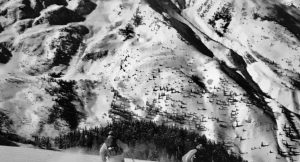
The findings of twenty laboratories and improvement of single module energy transfer were discussed. The speaker explained how the interaction of molecules can be monitored in living cells when the molecules moving closer together. The study is based on changes of lights in the fluorescence emitted and detected by microscope.

The next speaker pointed out that experimental aspect of single molecule scale needs measuring the weak signals in the environment. She explained how some techniques for single molecule experiment are used for measuring passing across a membrane. The current challenges and vitro experimental signals were discussed. Currently scientists performing experiments in single module imaging on cells membrane. The speaker pointed out that imaging single molecule components helped the researchers to find out the latest in cellular structure studies. (C) CTR Press


